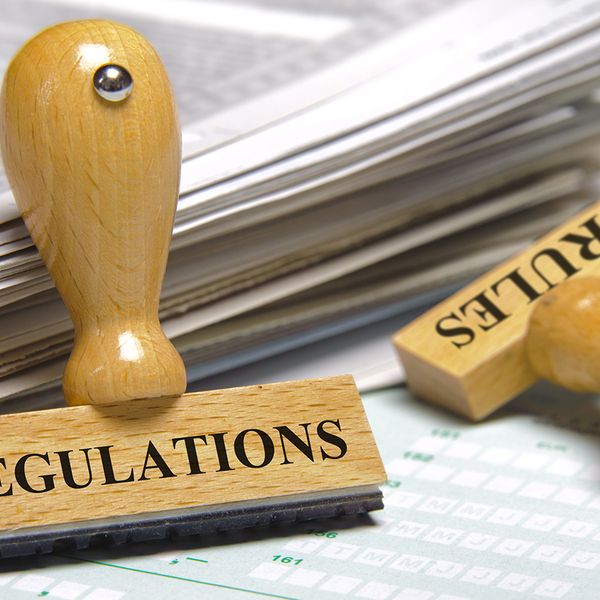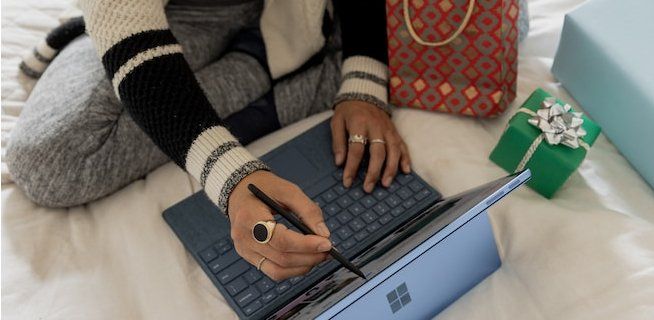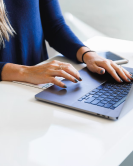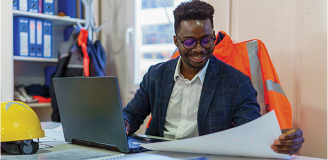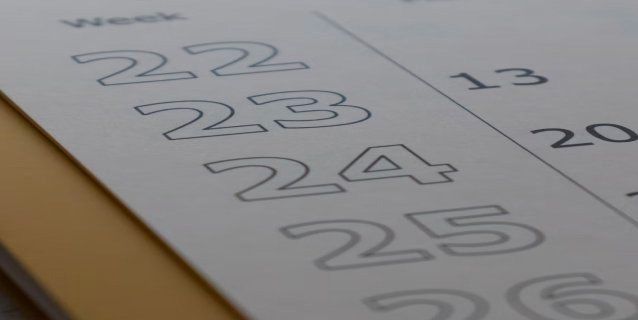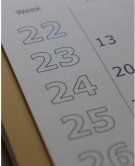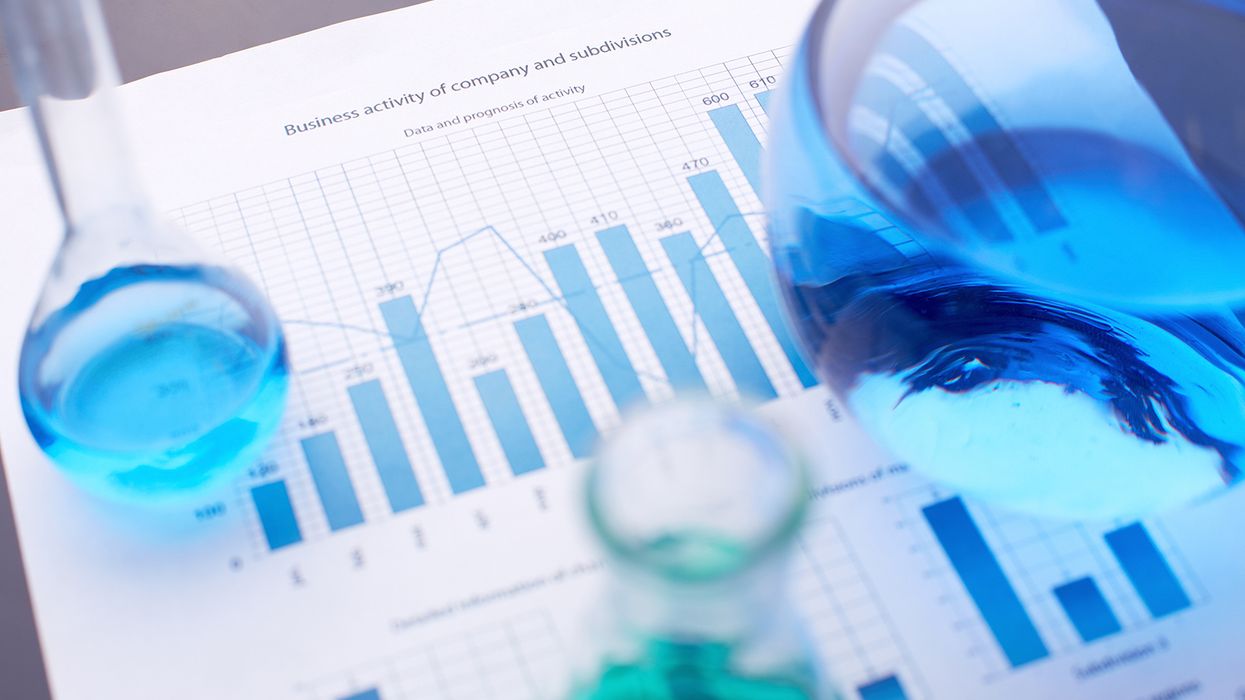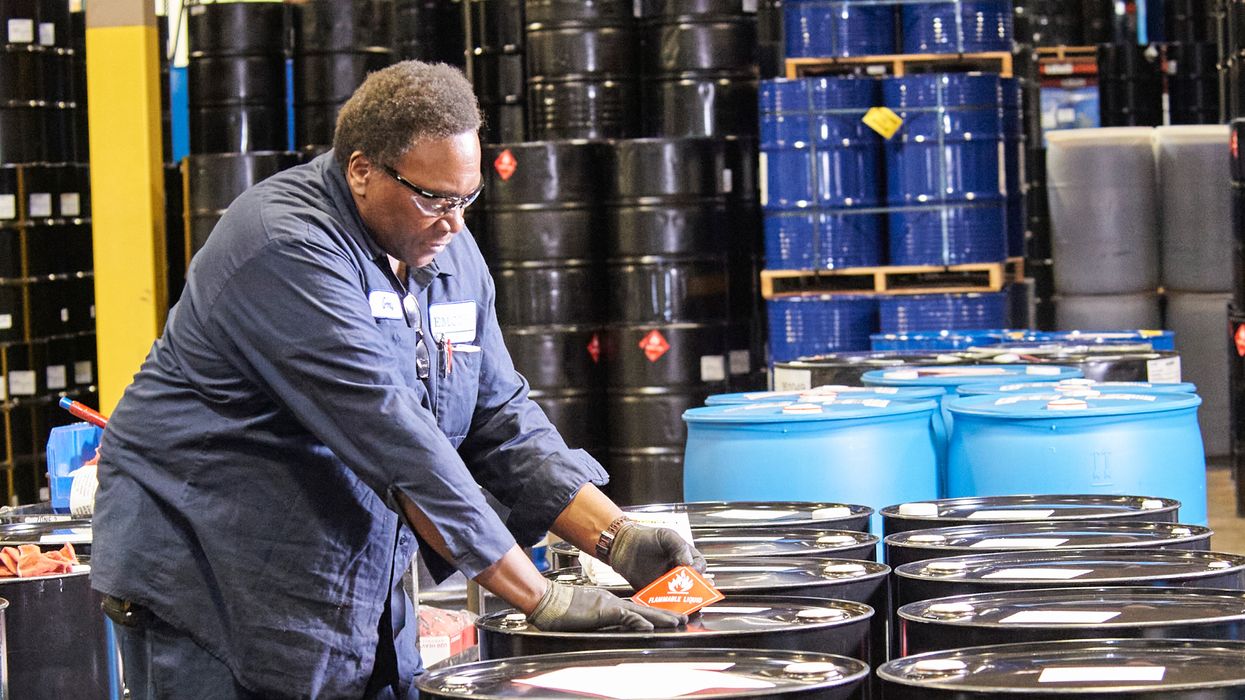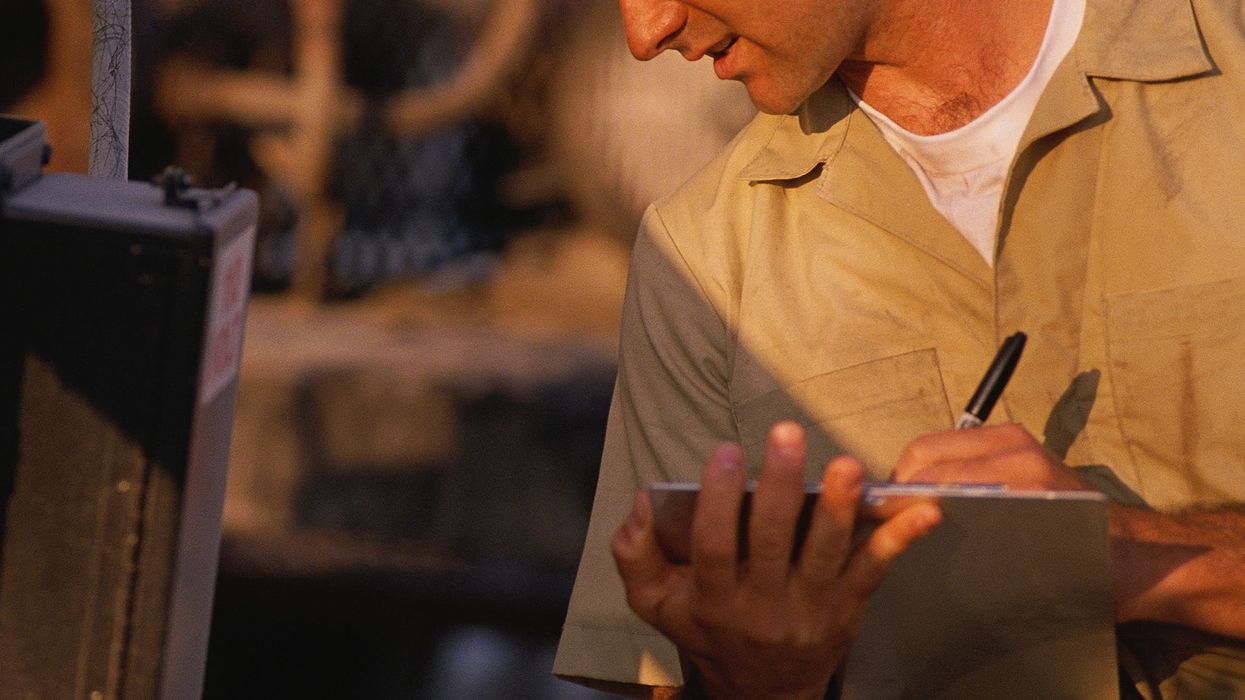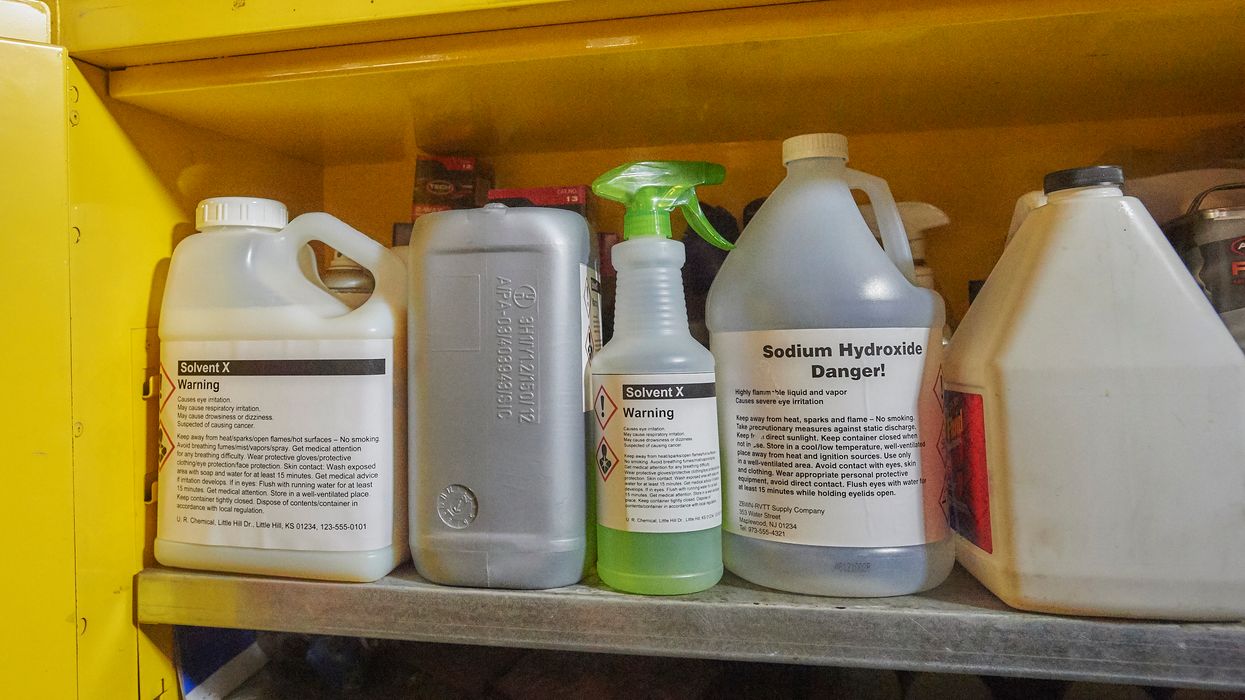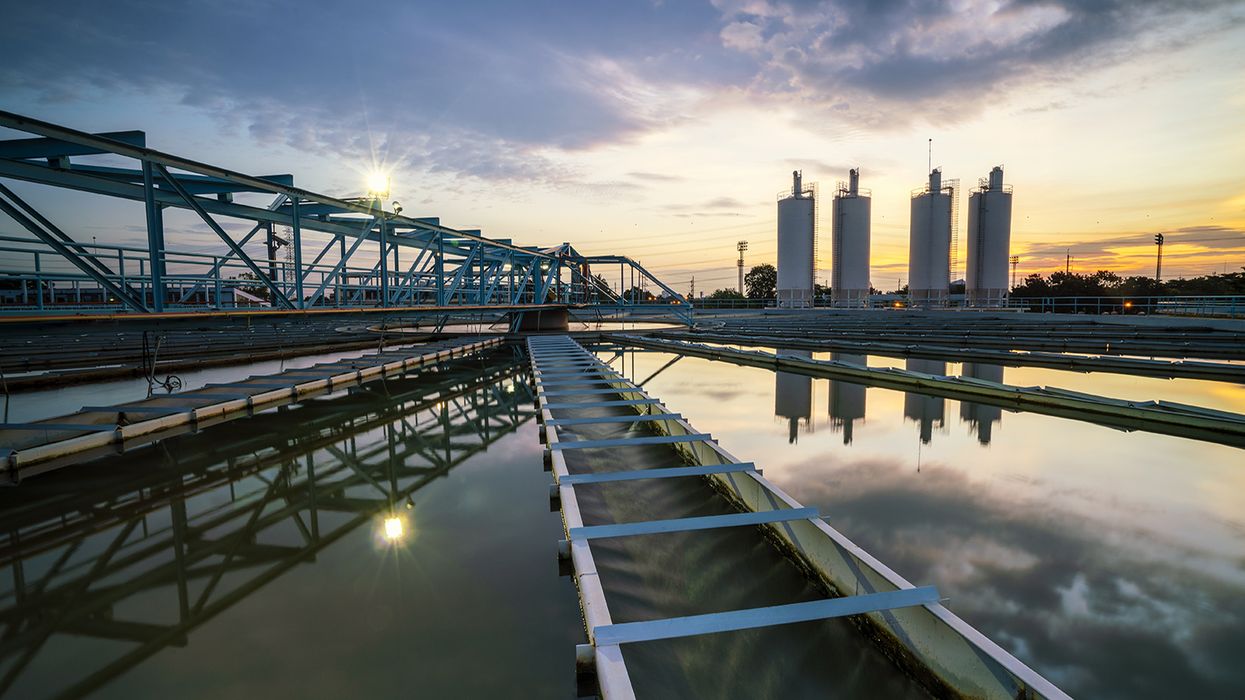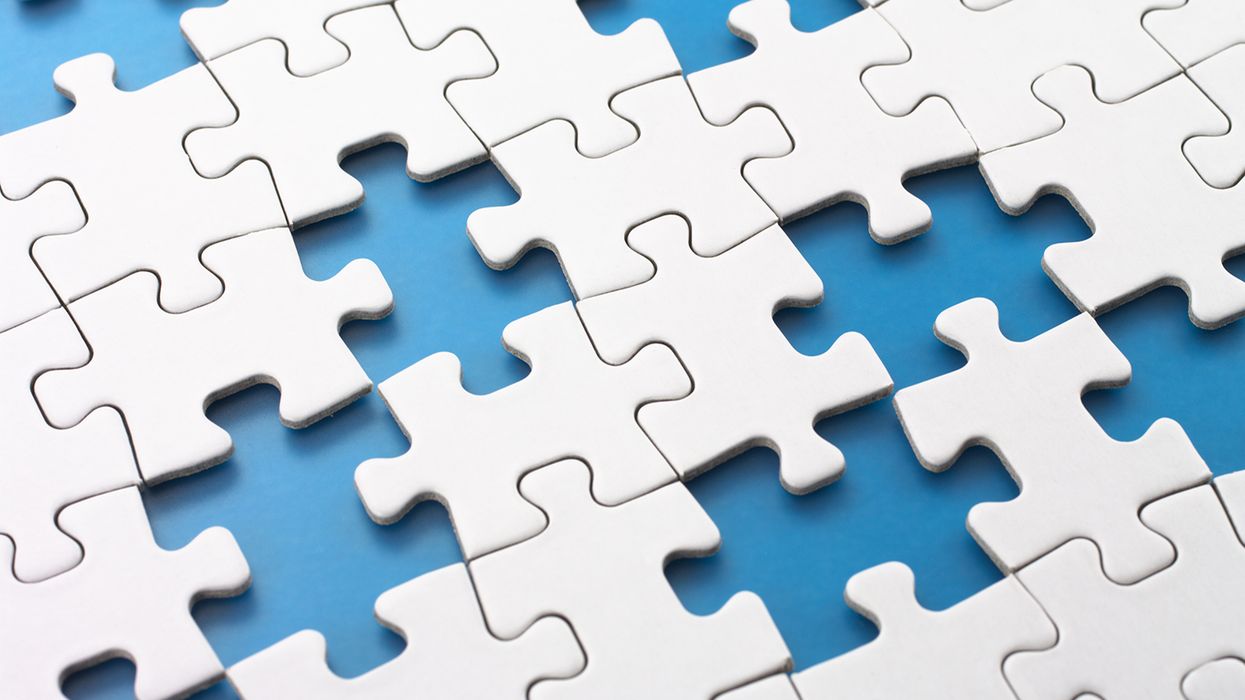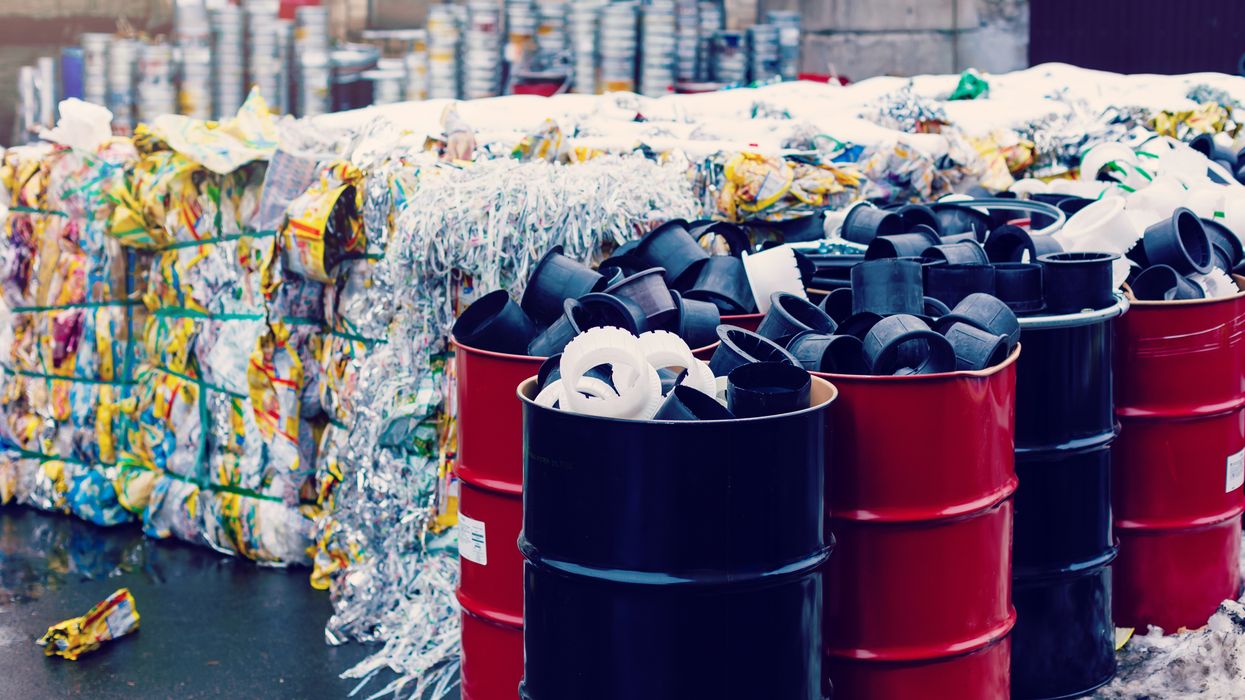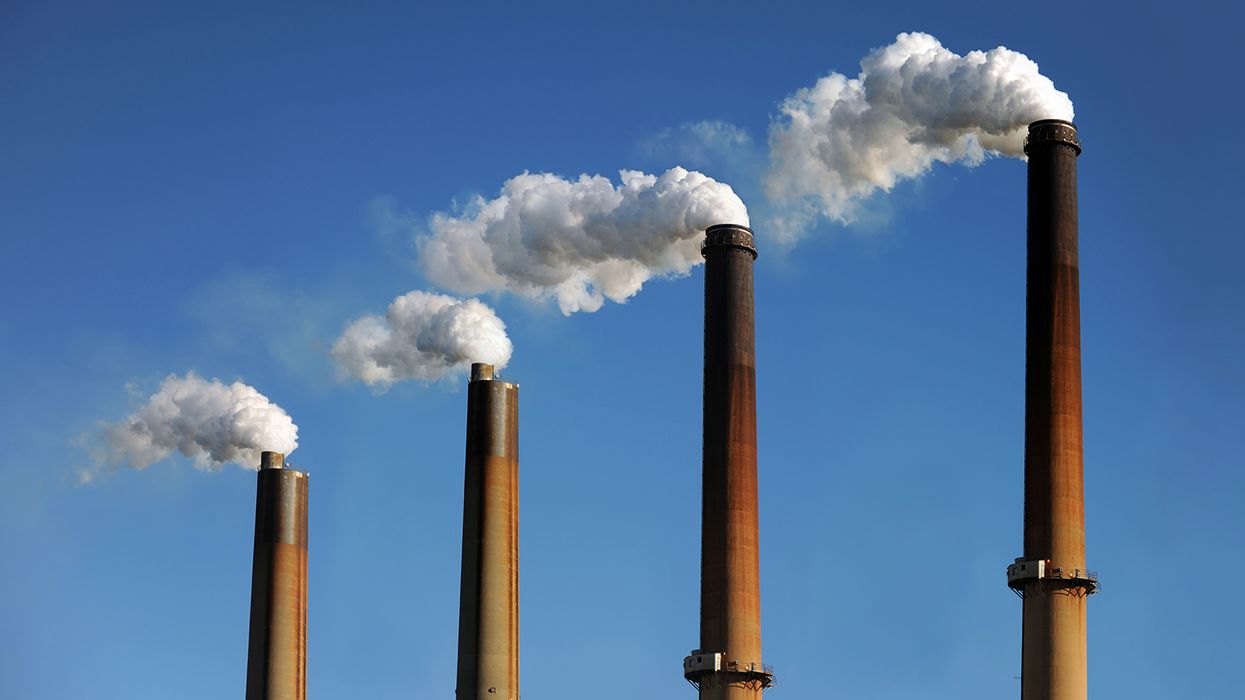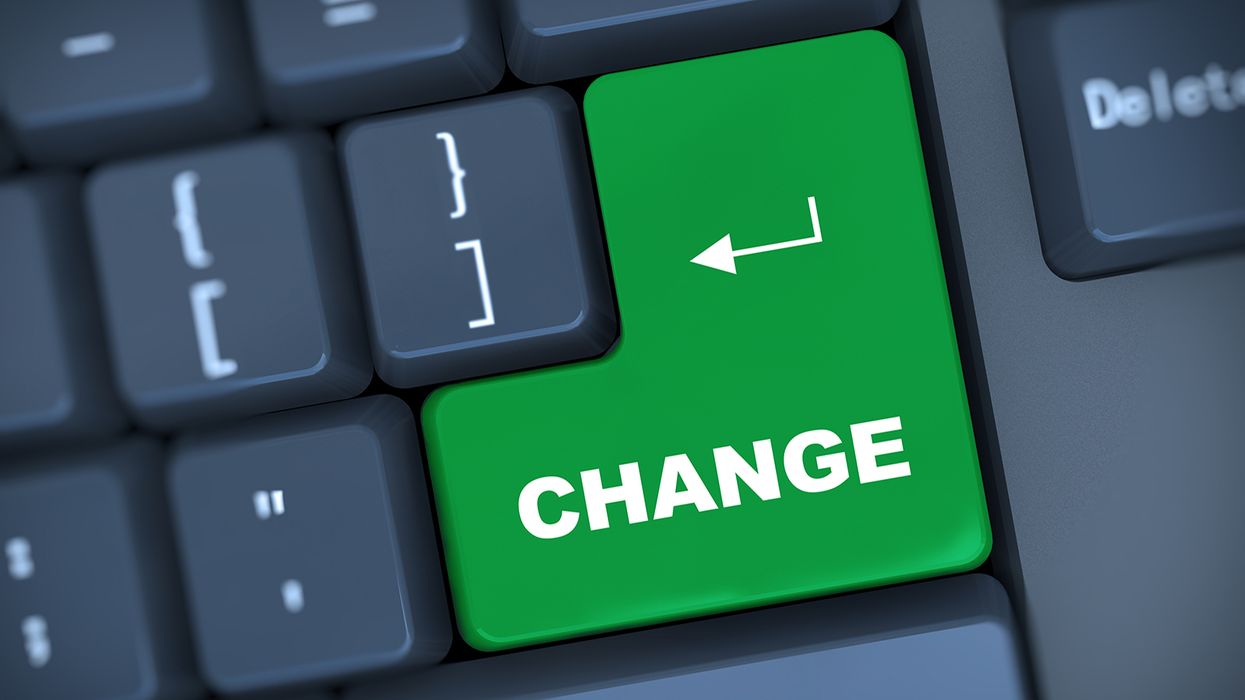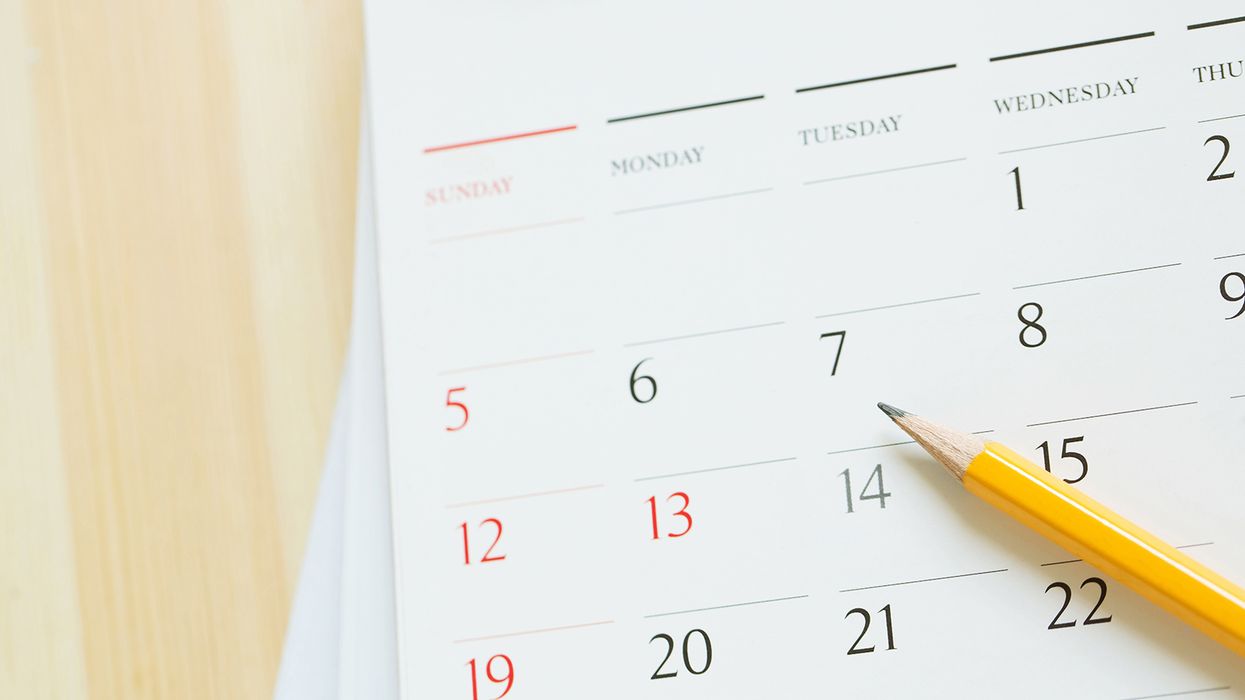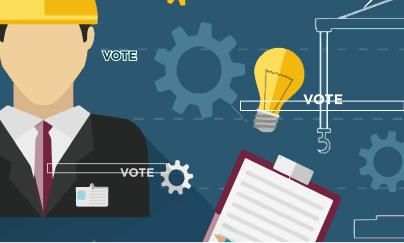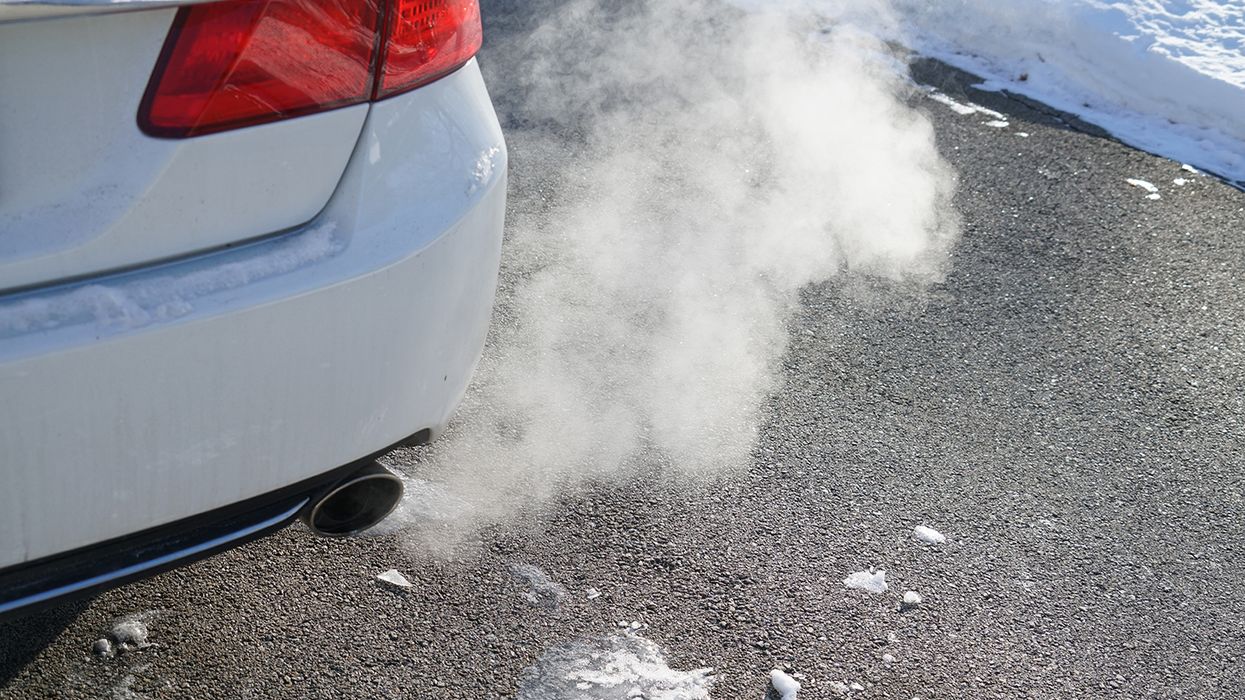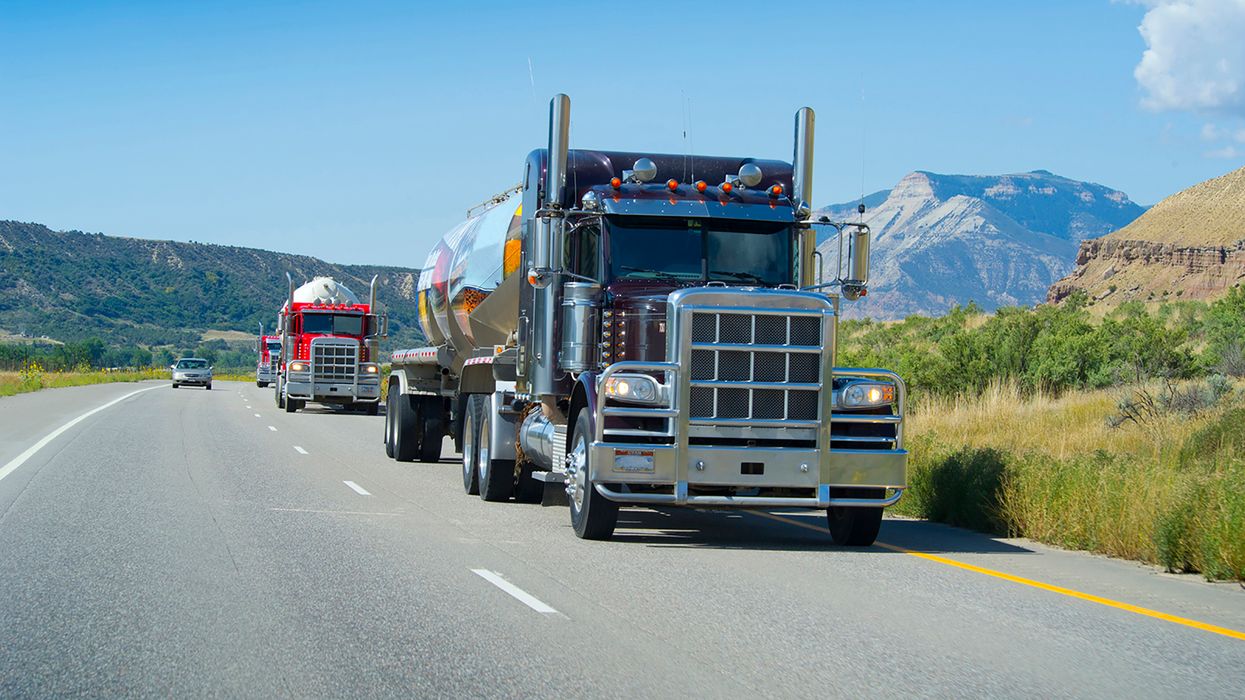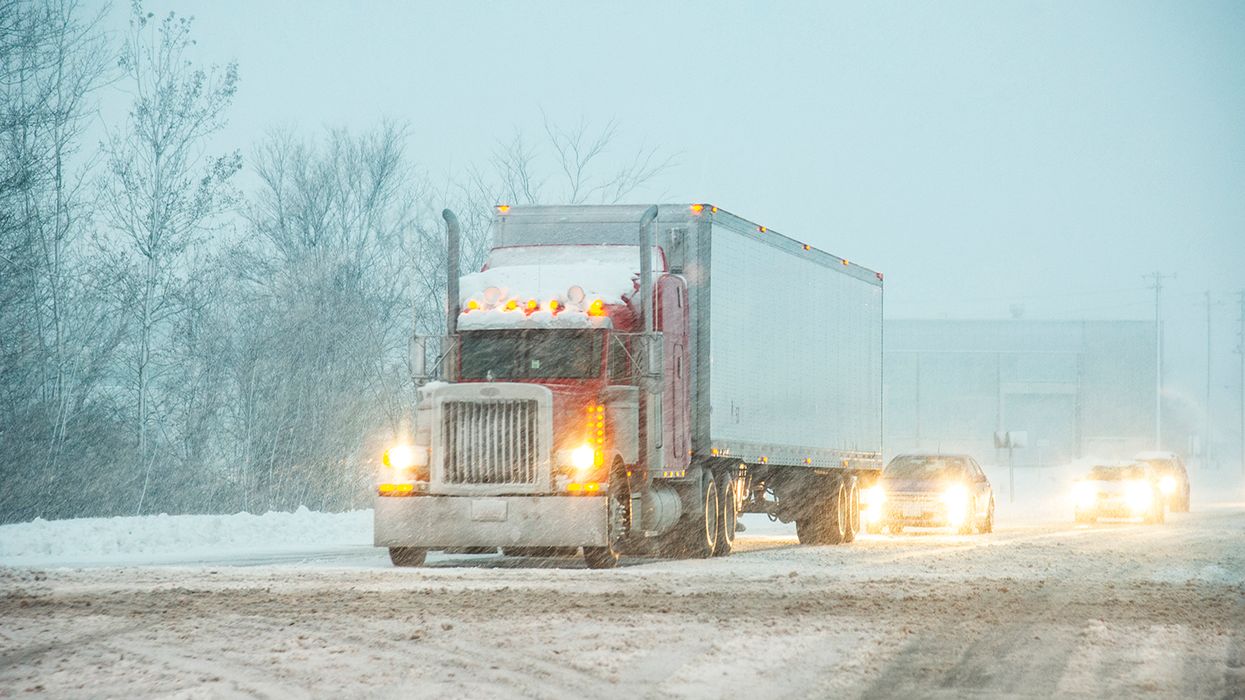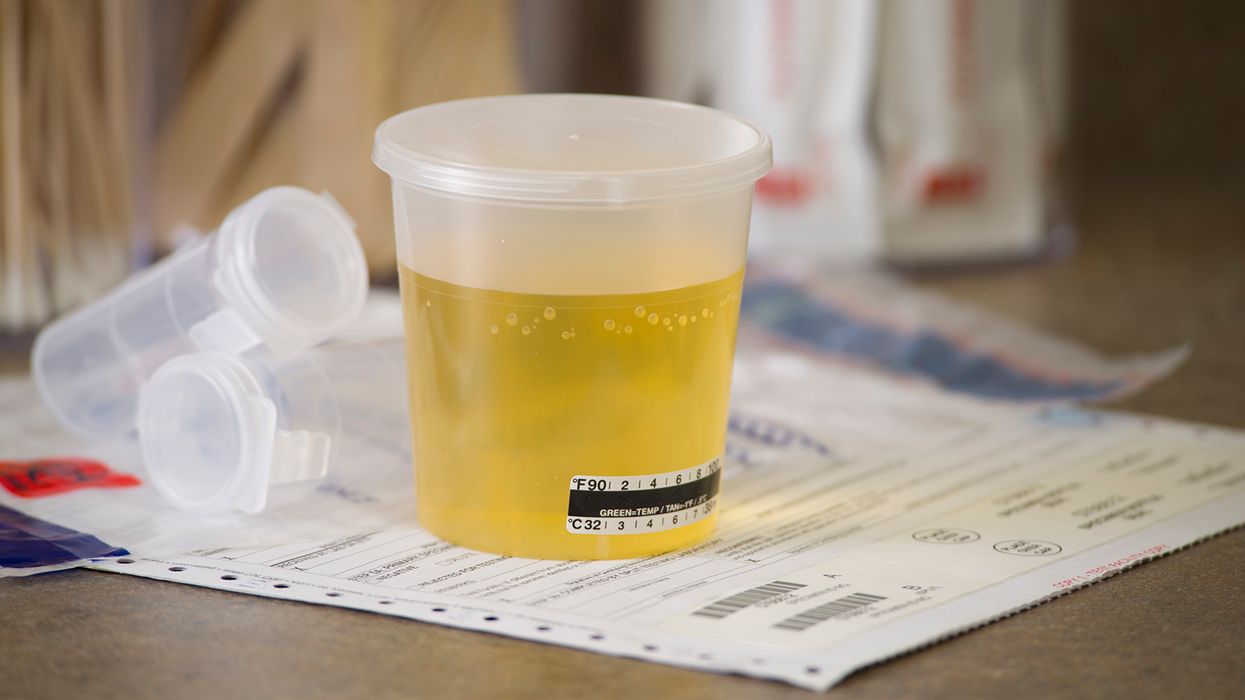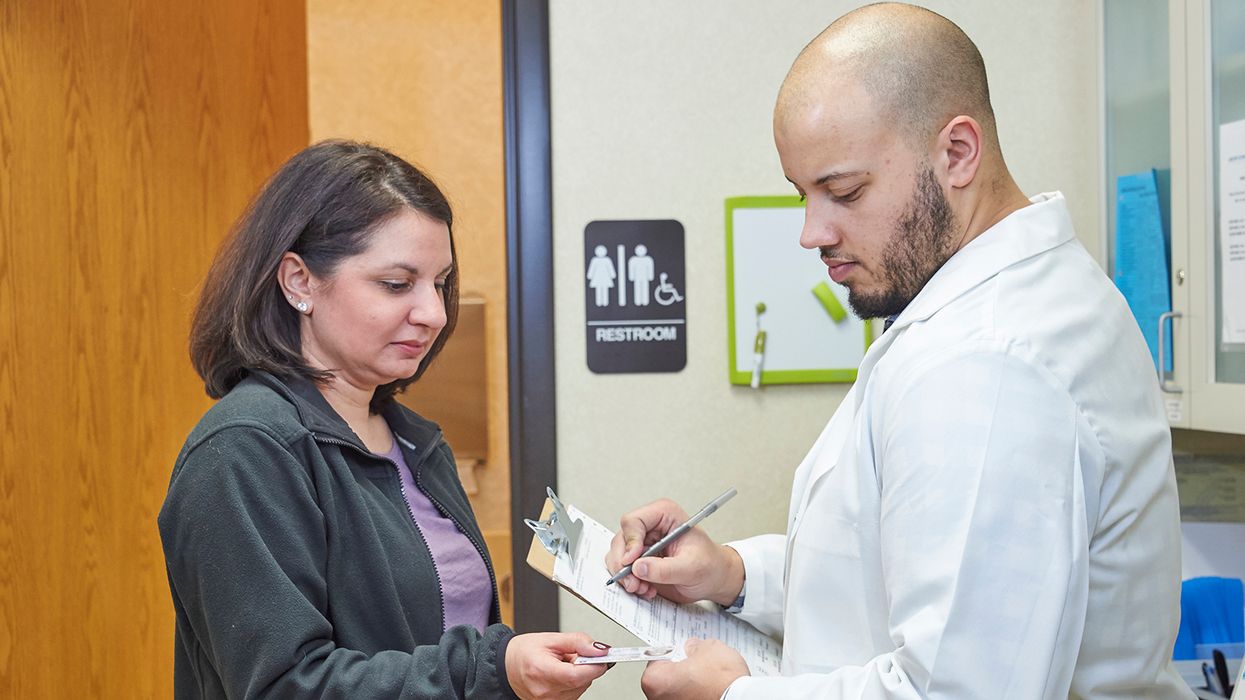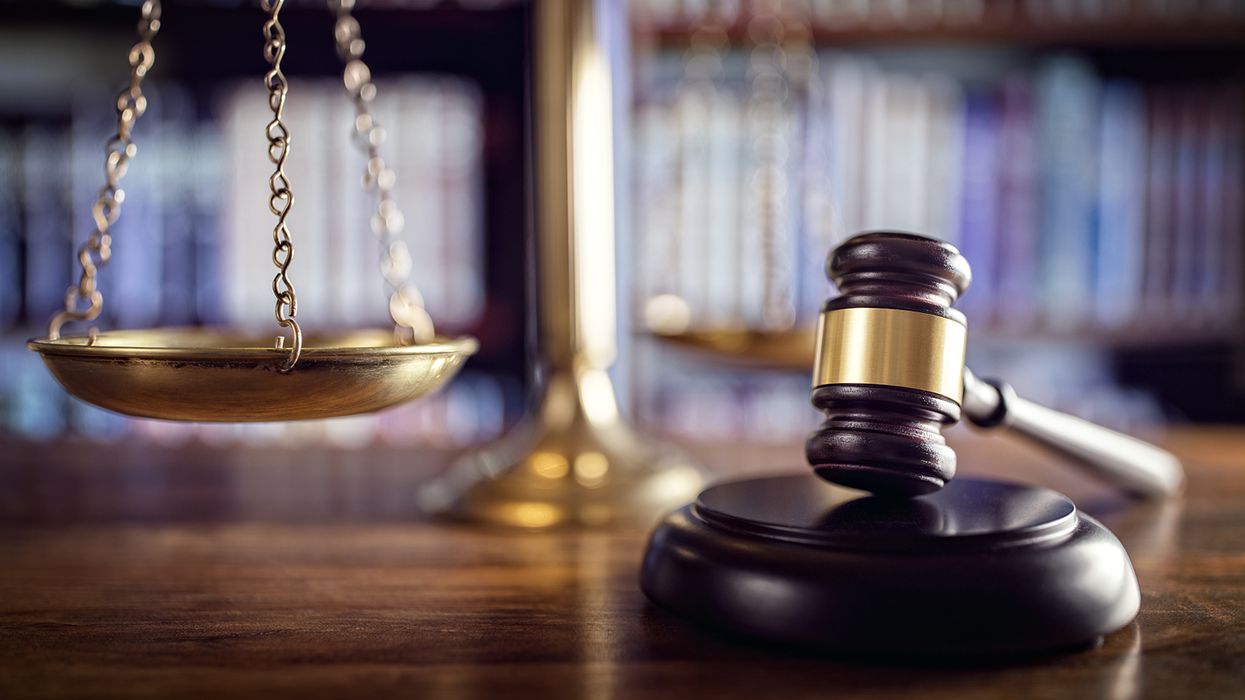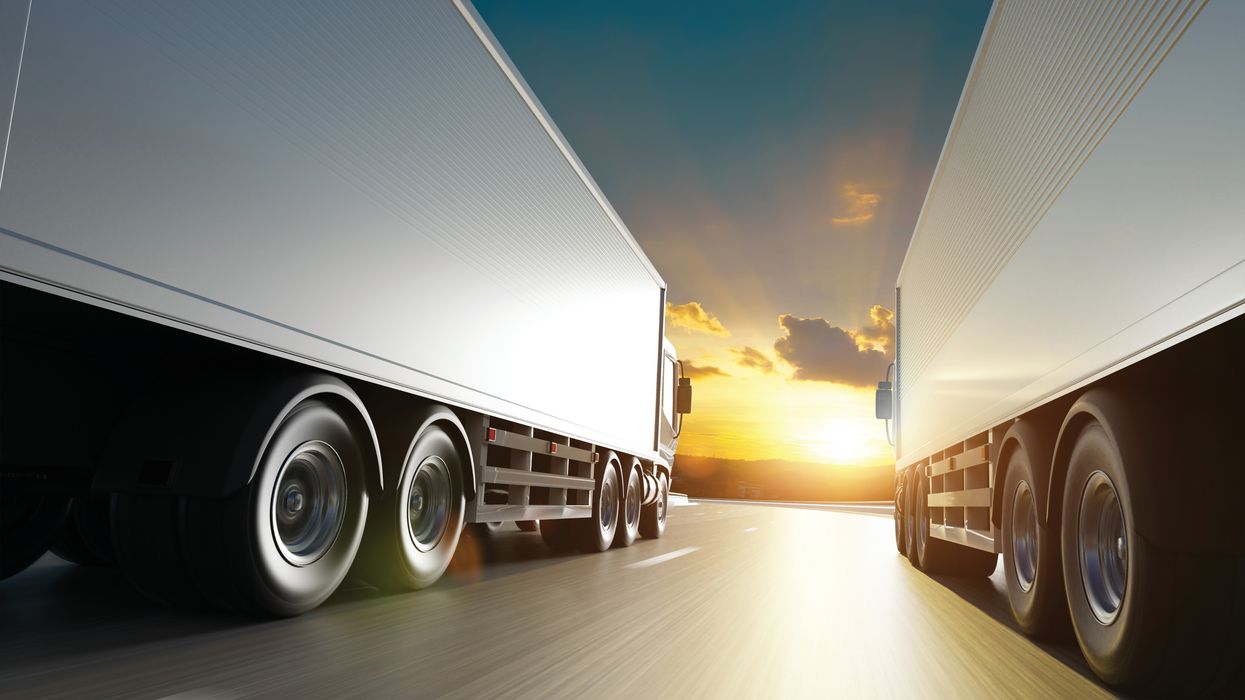86 FR 73207 National Perchloroethylene Air Emission Standards for Dry Cleaning Facilities Technology Review
ENVIRONMENTAL PROTECTION AGENCY
40 CFR Part 63
[EPA-HQ-OAR-2005-0155; FRL-8391-02-OAR]
RIN 2060-AV44
National Perchloroethylene Air Emission Standards for Dry Cleaning Facilities Technology Review
AGENCY: Environmental Protection Agency (EPA).
ACTION: Proposed rule.
SUMMARY: The U.S. Environmental Protection Agency (EPA) is proposing amendments to the National Emission Standards for Hazardous Air Pollutants (NESHAP) for dry cleaning facilities using perchloroethylene (PCE) as the cleaning solvent (PCE Dry Cleaning NESHAP). The proposed amendments address the results of the technology review for the PCE Dry Cleaning NESHAP, in accordance with section 112 of the Clean Air Act (CAA). Based on the findings of the technology review, the EPA proposes to add provisions to the rule which will require all dry-to-dry machines at existing major and area sources to have both refrigerated condensers and carbon adsorbers as secondary controls.
DATES: Comments must be received on or before February 10, 2022.
Public hearing: If anyone contacts us requesting a public hearing on or before January 11, 2022, we will hold a virtual public hearing. See SUPPLEMENTARY INFORMATION for information on requesting and registering for a public hearing.
ADDRESSES: You may send comments, identified by Docket ID No. EPA-HQ-OAR-2005-0155, by any of the following methods:
- Federal eRulemaking Portal: https://www.regulations.gov/ (our preferred method). Follow the online instructions for submitting comments.
- Email: a-and-r-docket@epa.gov. Include Docket ID No. EPA-HQ-OAR-2005-0155 in the subject line of the message.
- Fax: (202) 566-9744. Attention Docket ID No. EPA-HQ-OAR-2005-0155.
- Mail: U.S. Environmental Protection Agency, EPA Docket Center, Docket ID No. EPA-HQ-OAR-2005-0155, Mail Code 28221T, 1200 Pennsylvania Avenue NW, Washington, DC 20460.
- Hand/Courier Delivery: EPA Docket Center, WJC West Building, Room 3334, 1301 Constitution Avenue NW, Washington, DC 20004. The Docket Center's hours of operation are 8:30 a.m. to 4:30 p.m., Monday through Friday (except Federal holidays).
Instructions: All submissions received must include the Docket ID No. for this rulemaking. Comments received may be posted without change to https://www.regulations.gov/, including any personal information provided. For detailed instructions on sending comments and additional information on the rulemaking process, see the SUPPLEMENTARY INFORMATION section of this document. Out of an abundance of caution for members of the public and our staff, the EPA Docket Center and Reading Room are open to the public by appointment only to reduce the risk of transmitting COVID-19. Our Docket Center staff also continues to provide remote customer service via email, phone, and webform. Hand deliveries and couriers may be received by scheduled appointment only. For further information on EPA Docket Center services and the current status, please visit us online at https://www.epa.gov/dockets.
FOR FURTHER INFORMATION CONTACT:
For questions about this proposed action, contact Brian Storey, Sector Policies and Programs Division (Mail Code D243-04), Office of Air Quality Planning and Standards, U.S. Environmental Protection Agency, Research Triangle Park, North Carolina 27711; telephone number: (919) 541-1103; fax number: (919) 541-4991; and email address: brian.storey@epa.gov.
SUPPLEMENTARY INFORMATION:
Participation in virtual public hearing. Please note that because of current Centers for Disease Control and Prevention (CDC) recommendations, as well as state and local orders for social distancing to limit the spread of COVID-19, the EPA cannot hold in-person public meetings at this time.
To request a virtual public hearing, contact the public hearing team at (888) 372-8699 or by email at SPPDpublichearing@epa.gov. If requested, the virtual hearing will be held on January 11, 2022. The hearing will convene at 9:00 a.m. Eastern Time (ET) and will conclude at 3:00 p.m. ET. The EPA may close a session 15 minutes after the last pre-registered speaker has testified if there are no additional speakers. The EPA will announce further details at https://www.epa.gov/stationary-sources-air-pollution/dry-cleaning-facilities-national-perchloroethylene-air-emission.
If a public hearing is requested, the EPA will begin pre-registering speakers for the hearing upon publication of this document in the Federal Register . To register to speak at the virtual hearing, please use the online registration form available at https://www.epa.gov/stationary-sources-air-pollution/dry-cleaning-facilities-national-perchloroethylene-air-emission or contact the public hearing team at (888) 372-8699 or by email at SPPDpublichearing@epa.gov. The last day to pre-register to speak at the hearing will be January 10, 2022. Prior to the hearing, the EPA will post a general agenda that will list pre-registered speakers in approximate order at: https://www.epa.gov/stationary-sources-air-pollution/dry-cleaning-facilities-national-perchloroethylene-air-emission.
The EPA will make every effort to follow the schedule as closely as possible on the day of the hearing; however, please plan for the hearings to run either ahead of schedule or behind schedule.
Each commenter will have 5 minutes to provide oral testimony. The EPA encourages commenters to provide the EPA with a copy of their oral testimony electronically (via email) by emailing it to brian.storey@epa.gov. The EPA also recommends submitting the text of your oral testimony as written comments to the rulemaking docket.
The EPA may ask clarifying questions during the oral presentations but will not respond to the presentations at that time. Written statements and supporting information submitted during the comment period will be considered with the same weight as oral testimony and supporting information presented at the public hearing.
Please note that any updates made to any aspect of the hearing will be posted online at https://www.epa.gov/stationary-sources-air-pollution/dry-cleaning-facilities-national-perchloroethylene-air-emission. While the EPA expects the hearing to go forward as set forth above, please monitor our website or contact the public hearing team at (888) 372-8699 or by email at SPPDpublichearing@epa.gov to determine if there are any updates. The EPA does not intend to publish a document in the Federal Register announcing updates.
If you require the services of a translator or special accommodation such as audio description, please pre-register for the hearing with the public hearing team and describe your needs by January 3, 2022. The EPA may not be able to arrange accommodations without advanced notice.
Docket. The EPA has established a docket for this rulemaking under Docket ID No. EPA-HQ-OAR-2005-0155. All documents in the docket are listed in https://www.regulations.gov/. Although listed, some information is not publicly available, e.g., Confidential Business Information (CBI) or other information whose disclosure is restricted by statute. Certain other material, such as copyrighted material, is not placed on the internet and will be publicly available only in hard copy. With the exception of such material, publicly available docket materials are available electronically in Regulations.gov .
Instructions. Direct your comments to Docket ID No. EPA-HQ-OAR-2005-0155. The EPA's policy is that all comments received will be included in the public docket without change and may be made available online at https://www.regulations.gov/, including any personal information provided, unless the comment includes information claimed to be CBI or other information whose disclosure is restricted by statute. Do not submit electronically any information that you consider to be CBI or other information whose disclosure is restricted by statute. This type of information should be submitted by mail as discussed below.
The EPA may publish any comment received to its public docket. Multimedia submissions (audio, video, etc.) must be accompanied by a written comment. The written comment is considered the official comment and should include discussion of all points you wish to make. The EPA will generally not consider comments or comment contents located outside of the primary submission ( i.e., on the Web, cloud, or other file sharing system). For additional submission methods, the full EPA public comment policy, information about CBI or multimedia submissions, and general guidance on making effective comments, please visit https://www.epa.gov/dockets/commenting-epa-dockets.
The https://www.regulations.gov/ website allows you to submit your comment anonymously, which means the EPA will not know your identity or contact information unless you provide it in the body of your comment. If you send an email comment directly to the EPA without going through https://www.regulations.gov/, your email address will be automatically captured and included as part of the comment that is placed in the public docket and made available on the internet. If you submit an electronic comment, the EPA recommends that you include your name and other contact information in the body of your comment and with any digital storage media you submit. If the EPA cannot read your comment due to technical difficulties and cannot contact you for clarification, the EPA may not be able to consider your comment. Electronic files should not include special characters or any form of encryption and be free of any defects or viruses. For additional information about the EPA's public docket, visit the EPA Docket Center homepage at https://www.epa.gov/dockets.
Due to public health concerns related to COVID-19, the Docket Center and Reading Room are open to the public by appointment only. Our Docket Center staff also continues to provide remote customer service via email, phone, and webform. Hand deliveries or couriers will be received by scheduled appointment only. For further information and updates on EPA Docket Center services, please visit us online at https://www.epa.gov/dockets.
The EPA continues to carefully and continuously monitor information from the CDC, local area health departments, and our federal partners so that we can respond rapidly as conditions change regarding COVID-19.
Submitting CBI. Do not submit information containing CBI to the EPA through https://www.regulations.gov/ or email. Clearly mark the part or all of the information that you claim to be CBI. For CBI information on any digital storage media that you mail to the EPA, mark the outside of the digital storage media as CBI and then identify electronically within the digital storage media the specific information that is claimed as CBI. In addition to one complete version of the comments that includes information claimed as CBI, you must submit a copy of the comments that does not contain the information claimed as CBI directly to the public docket through the procedures outlined in Instructions above. If you submit any digital storage media that does not contain CBI, mark the outside of the digital storage media clearly that it does not contain CBI. Information not marked as CBI will be included in the public docket and the EPA's electronic public docket without prior notice. Information marked as CBI will not be disclosed except in accordance with procedures set forth in 40 Code of Federal Regulations (CFR) part 2. Send or deliver information identified as CBI only to the following address: OAQPS Document Control Officer (C404-02), OAQPS, U.S. Environmental Protection Agency, Research Triangle Park, North Carolina 27711, Attention Docket ID No. EPA-HQ-OAR-2005-0155. Note that written comments containing CBI and submitted by mail may be delayed and no hand deliveries will be accepted.
Preamble acronyms and abbreviations. Throughout this document wherever “we,” “us,” or “our” is used, it is intended to refer to the EPA. We use multiple acronyms and terms in this preamble. While this list may not be exhaustive, to ease the reading of this preamble and for reference purposes, the EPA defines the following terms and acronyms here:
CAA Clean Air Act
CBI Confidential Business Information
CDC Center for Disease Control
CFR Code of Federal Regulations
ECHO Enforcement and Compliance History Online
EPA Environmental Protection Agency
EJ environmental justice
FR Federal Register
GACT generally available control technology
HAP hazardous air pollutant(s)
LDAR leak detection and repair
MACT maximum achievable control technology
NAICS North American Industry Classification System
NESHAP national emission standards for hazardous air pollutants
NTTAA National Technology Transfer and Advancement Act
OAQPS Office of Air Quality Planning and Standards
OECA Office of Enforcement and Compliance Assurance
OMB Office of Management and Budget
ORCR Office of Resource Conservation and Recovery
PCE perchloroethylene
ppm parts per million
PRA Paperwork Reduction Act
RBLC RACT/BACT/LAER Clearinghouse
RCRA Resource Conservation and Recovery Act
RFA Regulatory Flexibility Act
SBA Small Business Administration
SBEAP Small Business Environmental Assistance Program
tpy tons per year
TTN Technology Transfer Network
UMRA Unfunded Mandate Reform Act
Organization of this document. The information in this preamble is organized as follows:
I. General Information
A. Does this action apply to me?
B. Where can I get a copy of this document and other related information?
II. Background
A. What is the statutory authority for this action?
B. What are these source categories and how does the current NESHAP regulate their HAP emissions?
C. What data collection activities were conducted to support this action?
D. What other relevant background information and data are available?
E. How does the EPA perform the technology review?
III. Proposed Rule Summary and Rationale
A. What are the results and proposed decisions based on our technology review, and what is the rationale for those decisions?
B. What compliance dates are we proposing, and what is the rationale for the proposed compliance dates?
IV. Summary of Cost, Environmental, and Economic Impacts
A. What are the affected sources?
B. What are the air quality impacts?
C. What are the cost impacts?
D. What are the economic impacts?
E What are the benefits?
F. What analysis of environmental justice did we conduct?
V. Request for Comments
VI. Statutory and Executive Order Reviews
A. Executive Order 12866: Regulatory Planning and Review and Executive Order 13563: Improving Regulation and Regulatory Review
B. Paperwork Reduction Act (PRA)
C. Regulatory Flexibility Act (RFA)
D. Unfunded Mandates Reform Act (UMRA)
E. Executive Order 13132: Federalism
F. Executive Order 13175: Consultation and Coordination With Indian Tribal Governments
G. Executive Order 13045: Protection of Children From Environmental Health Risks and Safety Risks
H. Executive Order 13211: Actions Concerning Regulations That Significantly Affect Energy Supply, Distribution, or Use
I. National Technology Transfer and Advancement Act (NTTAA)
J. Executive Order 12898: Federal Actions To Address Environmental Justice in Minority Populations and Low-Income Populations
I. General Information
A. Does this action apply to me?
The standards in 40 CFR part 63, subpart M, apply to industrial and commercial dry cleaning facilities that use PCE. The North American Industry Classification System (NAICS) codes applicable to 40 CFR part 63, subpart M, are 812310 (coin-operated laundries and dry cleaners), 812320 (dry cleaning and laundry services other than coin-operated services), and 812332 (industrial launderers). This list of categories and NAICS codes is not intended to be exhaustive, but rather provides a guide for readers regarding the entities that this proposed action are likely to affect.
As defined in the Initial List of Categories of Sources Under Section 112(c)(1) of the Clean Air Act Amendments of 1990 (see 57 FR 31576, July 16, 1992) and Documentation for Developing the Initial Source Category List, Final Report ( see EPA-450/3-91-030, July 1992), the PCE dry cleaning source categories include any facility engaged in cleaning soiled apparel, leather, and other fine goods. These are usually small independently operated neighborhood shops, franchise shops, and small specialty shops. The source categories only include facilities that use PCE as a cleaning agent.
Federal, state, local, and tribal government entities would not be affected by this proposed action.
B. Where can I get a copy of this document and other related information?
In addition to being available in the docket, an electronic copy of this action is available on the internet. Following signature by the EPA Administrator, the EPA will post a copy of this proposed action at https://www.epa.gov/dry-cleaning-facilities-national-perchloroethylene-air-emission. Following publication in the Federal Register , the EPA will post the Federal Register version of the proposal and key technical documents at this same website.
A redline version of the regulatory language that incorporates the proposed changes is available in the docket for this action (Docket ID No. EPA-HQ-OAR-2005-0155).
II. Background
A. What is the statutory authority for this action?
The statutory authority for this action is provided by sections 112 and 301 of the Clean Air Act (CAA), as amended (42 U.S.C. 7401 et seq. ). Section 112 of the CAA establishes a two-stage regulatory process to develop standards for emissions of hazardous air pollutants (HAP) from stationary sources. Generally, the first stage involves establishing technology-based standards and the second stage involves evaluating those standards that are based on maximum achievable control technology (MACT) to determine whether additional standards are needed to address any remaining risk associated with HAP emissions. This second stage is commonly referred to as the “residual risk review.” In addition to the residual risk review, the CAA also requires the EPA to review MACT and generally available control technology (GACT) standards set under CAA section 112 every 8 years and revise the standards as necessary taking into account developments in practices, processes, or control technologies. This review is commonly referred to as the “technology review,” and is the subject of this proposal. The discussion that follows identifies the most relevant statutory sections and briefly explains the contours of the methodology used to implement these statutory requirements. A more comprehensive discussion appears in the document titled CAA Section 112 Risk and Technology Reviews: Statutory Authority and Methodology, in the docket for this rulemaking.
In the first stage of the CAA section 112 standard setting process, the EPA promulgates technology-based standards under CAA section 112(d) for categories of sources identified as emitting one or more of the HAP listed in CAA section 112(b). Sources of HAP emissions are either major sources or area sources, and CAA section 112 establishes different requirements for major source standards and area source standards. “Major sources” are those that emit or have the potential to emit 10 tons per year (tpy) or more of a single HAP or 25 tpy or more of any combination of HAP. All other sources are “area sources.” For major sources, CAA section 112(d)(2) provides that the technology-based NESHAP must reflect the maximum degree of emission reductions of HAP achievable (after considering cost, energy requirements, and non-air quality health and environmental impacts). These standards are commonly referred to as MACT standards. CAA section 112(d)(3) also establishes a minimum control level for MACT standards, known as the MACT “floor.” In certain instances, as provided in CAA section 112(h), the EPA may set work practice standards in lieu of numerical emission standards. The EPA must also consider control options that are more stringent than the floor. Standards more stringent than the floor are commonly referred to as “beyond-the-floor” standards. For area sources, CAA section 112(d)(5) allows the EPA to set standards based on GACT standards in lieu of MACT standards. For categories of major sources and any area source categories subject to MACT standards, the second stage in standard-setting focuses on identifying and addressing any remaining ( i.e., “residual”) risk pursuant to CAA section 112(f) and concurrently conducting a technology review pursuant to CAA section 112(d)(6). For categories of area sources subject to GACT standards, there is no requirement to address residual risk, but, similar to the major source categories, the technology review is required.
CAA section 112(d)(6) requires the EPA to review standards promulgated under CAA section 112 and revise them “as necessary (taking into account developments in practices, processes, and control technologies)” no less often than every 8 years. In conducting this review, which we call the “technology review,” the EPA is not required to recalculate the MACT floors that were established in earlier rulemakings. Natural Resources Defense Council (NRDC) v. EPA, 529 F.3d 1077, 1084 (D.C. Cir. 2008). Association of Battery Recyclers, Inc. v. EPA, 716 F.3d 667 (D.C. Cir. 2013). The EPA may consider cost in deciding whether to revise the standards pursuant to CAA section 112(d)(6). The EPA is required to address regulatory gaps, such as missing standards for listed air toxics known to be emitted from the source category, and any new MACT standards must be established under CAA sections 112(d)(2) and (3), or, in specific circumstances, CAA sections 112(d)(4) or (h). Louisiana Environmental Action Network (LEAN) v. EPA, 955 F.3d 1088 (D.C. Cir. 2020).
B. What are these source categories and how does the current NESHAP regulate their HAP emissions?
The PCE Dry Cleaning NESHAP was originally promulgated September 22, 1993 (58 FR 49376) as 40 CFR part 63, subpart M. Significant amendments were promulgated on June 3, 1996 (61 FR 27788), December 14, 1999 (64 FR 69643), July 27, 2006 (71 FR 42743), and July 11, 2008 (73 FR 39871). The PCE Dry Cleaning NESHAP includes MACT standards which apply to major sources, and GACT standards which apply to area sources of dry cleaning that use the chemical PCE. The PCE Dry Cleaning NESHAP regulates PCE emitted from the dry cleaning process.
Dry cleaning is any cleaning process for clothing and other garments using a solvent other than water. PCE, also known as perc, tetrachloroethene, or tetrachloroethylene has been, historically, the most widely used liquid solvent in dry cleaning. Dry cleaning facilities may provide dry cleaning and laundering services at the location, or the facility may be a drop-off only location that transports the garments to a separate location where the cleaning is performed. Establishments may also offer specialty cleaning services for garments and textiles such as fur, leather, suede, wedding gowns, draperies, and pillows.
PCE dry cleaning machines are classified into two types: Transfer and dry-to-dry. Similar to residential washing machines and dryers, transfer machines include a unit for washing and another unit for drying. Following the wash cycle, PCE-containing articles are manually transferred from the washer to the dryer. The transfer of wet fabrics is the predominant source of PCE emissions in these systems. Transfer machines are prohibited at all existing and new major and area sources due to the NESHAP's requirement that dry cleaning systems eliminate any emissions of PCE while transferring articles between the washer and the dryer or reclaimer. Therefore, transfer machines are no longer sold, and none are known to still be in operation as these machines have reached the end of their useful lives and should have been replaced by dry-to-dry machines. Dry-to-dry machines wash, extract, and dry the articles in a single machine. The articles enter and exit the machine dry. Because the transfer step is eliminated, dry-to-dry machines have much lower emissions than transfer machines.
“Fourth generation” dry-to-dry machines were introduced in the early 1990s. A fourth generation dry-to-dry machine is a closed-loop system that uses a refrigerated condenser(s) to recycle PCE from the wash cycle, and a carbon adsorption unit(s) to filter PCE from the drum at the end of the dry cycle. The refrigerated condenser is a vapor recovery system into which an air-PCE gas-vapor stream is routed and the PCE is condensed by cooling the gas-vapor stream. The air remaining in the machine at the end of the dry cleaning cycle then passes through a carbon adsorber prior to opening the machine door. The carbon adsorber is a bed of activated carbon into which the air-PCE gas-vapor stream is routed and PCE is adsorbed on the carbon. The use of the carbon adsorber in combination with the refrigerated condenser offers greater emissions reductions over a dry-to-dry machine equipped with only a refrigerated condenser because it reduces the PCE concentration in the air remaining in the machine once the dry cleaning cycle is complete instead of allowing those vapors to be vented or released at the end of the dry cleaning cycle.
The latest generation machines, or “fifth generation” machines were introduced in the late 1990s. They have the same control technology as fourth generation machines, but they are also equipped with an inductive fan, internal solvent vapor monitoring devices (sensor), and interlock (lockout) devices that will not allow access to the machine until solvent vapor concentrations are below 300 ppm. The lockout feature ensures that the PCE set-point has been attained before the machine door can be opened, but it does not remove additional PCE.
Per 40 CFR 63.320, a dry cleaning facility is a major source if the facility emits or has the potential to emit more than 10 tons per year of PCE to the atmosphere. A dry cleaning facility is considered an area source if it does not meet the criteria for major sources, as specified in 40 CFR 63.320. However, in lieu of measuring or determining a facility's potential to emit PCE emissions, a dry cleaning facility is a major source if: (1) It includes only dry-to-dry machine(s) and has a total yearly PCE consumption greater than 2,100 gallons as determined according to 40 CFR 63.323(d); or (2) it includes only transfer machine system(s) or both dry-to-dry machine(s) and transfer machine system(s) and has a total yearly PCE consumption greater than 1,800 gallons as determined according to 40 CFR 63.323(d).
As defined by the initial list of source categories publish on July 16, 1992 (57 FR 31576), the PCE Dry Cleaning NESHAP applies to the following major and area sources of HAP emissions:
Major Source Categories
- Commercial Dry Cleaning [Perchloroethylene]—Transfer Machines
- Industrial Dry Cleaning [Perchloroethylene]—Transfer Machines
- Industrial Dry Cleaning [Perchloroethylene]—Dry-to-Dry Machines
Area Source Categories
- Commercial Dry Cleaning [Perchloroethylene]—Transfer Machines
- Commercial Dry Cleaning [Perchloroethylene]—Dry-to-Dry Machines
In general, the PCE Dry Cleaning NESHAP affects three types of dry cleaners that use PCE: Commercial, industrial, and co-residential. Commercial facilities clean household items such as suits, dresses, coats, pants, comforters, curtains, leather clothing, and formal wear. Industrial dry cleaners clean heavily stained articles such as work gloves, uniforms, mechanics' overalls, mops, and shop rags. Co-residential facilities are usually a subset of commercial operations and include dry cleaning operations located in buildings in which people reside. Co-residential facilities are generally found in urban areas where commercial and residential occupancy occur in a single building.
The PCE Dry Cleaning NESHAP identifies all major sources as “large” industrial and commercial dry cleaners. These dry cleaners are subject to MACT standards under this NESHAP. It is estimated that there are five or fewer of these major source dry cleaners remaining in the United States. 1 The PCE Dry Cleaning NESHAP requires new major source PCE dry cleaners operating dry-to-dry machines to:
1 Estimated quantity of major source PCE dry cleaners is based on details provided to EPA by state regulators, state small business environmental assistance providers' programs (SBEAP) personnel, and industry trade association representatives. Refer to the docket for this proposed rule (Docket ID No. EPA-HQ-OAR-2005-0155).
- Operate with a refrigerated condenser and carbon adsorber process controls.
- Use an enhanced leak detection and repair (LDAR) program to detect PCE leaks from the machines ( i.e., PCE gas analyzer operated according to EPA Method 21), repair the leaks, and maintain records.
The PCE Dry Cleaning NESHAP requires existing major source PCE dry cleaners operating dry-to-dry machines to:
- Operate with a refrigerated condenser or a carbon adsorber as process control.
- Use an enhanced LDAR program to detect PCE leaks from the machines ( i.e., PCE gas analyzer operated according to EPA Method 21), repair the leaks, and maintain records.
Dry cleaners that are commonly found in community settings ( e.g., shopping centers and strip malls) are typically “area sources,” meaning they emit less than 10 tons of PCE each year, and are smaller in size in comparison to major source industrial and commercial PCE dry cleaners. The PCE Dry Cleaning NESHAP standards for these area sources are GACT standards. The PCE Dry Cleaning NESHAP requires existing area source PCE dry cleaners operating dry-to-dry machines to:
- Use a halogenated hydrocarbon detector or PCE gas analyzer monthly to detect PCE leaks, repair the leaks, and maintain records.
New area source PCE dry cleaners operating dry-to-dry machines must:
- Operate with a refrigerated condenser and carbon adsorber process controls.
- Use a halogenated hydrocarbon detector or PCE gas analyzer to detect PCE leaks, repair the leaks, and maintain records.
The 2006 amendments to the PCE Dry Cleaning NESHAP eliminated the use of PCE by dry cleaners in co-residential buildings ( e.g., a dry cleaner found on the ground floor of an apartment building). EPA recognized that because co-residential dry cleaners are located very close to residences, residents' exposures and their cancer risks could be much higher than for typical area source dry cleaners. As such, the PCE Dry Cleaning NESHAP includes requirements to eliminate risks associated with PCE emissions from co-residential dry cleaners. Under 40 CFR 63.322(o)(5)(i), owners/operators were required to eliminate any PCE emissions from systems located in residential buildings by December 21, 2020. These dry cleaner owner/operators were allowed to replace PCE machines with newer available non-PCE technology. This sunset date allowed owners of existing co-residential sources to operate their machines for their maximum estimated useful life, 15 years, assuming they were first installed no later than December 21, 2005. Additionally, under 40 CFR 63.320(b)(2)(ii) and 63.322(o)(5)(ii), any PCE dry cleaning machines in co-residential buildings that began operating between December 21, 2005 and July 13, 2006, were required to install equipment to aggressively control PCE emissions ( i.e., refrigerated condensers, carbon adsorbers, and vapor barriers), and to conduct weekly inspections to detect PCE leaks, repair the leaks, and maintain records, before eliminating PCE emissions by July 27, 2009.
Petitions for judicial review of the 2006 amendments to the NESHAP were filed by the Sierra Club, Halogenated Solvents Industry, Neighborhood Cleaners Association, International Fabricare Institute, and Textile Care Allied Trades Association. Sierra Club et al. v. USEPA, No. 06-1330 (and consolidated cases) (D.C. Cir.). Petitioners questioned: Whether the EPA reasonably interpreted CAA section 112(d)(6) to allow consideration of risk and costs as factors in determining the extent to which it was necessary to revise standards regulating PCE; whether EPA reasonably determined under section 112(d)(6) that it was necessary to revise standards regulating PCE, and to require elimination of PCE emissions at co-residential systems but not at other systems; whether the EPA had complied with the Regulatory Flexibility Act (RFA); and whether EPA had reasonably denied a petition for reconsideration of the rule submitted by the Sierra Club. Although the case was fully briefed, in 2009 before it could be argued at the D.C. Circuit, the parties agreed to EPA taking a voluntary remand of the rule in order for the then-new administration to consider whether further administrative action was warranted regarding the challenged issues, while leaving the rule in force. As discussed in section III.A of this preamble, we are proposing our response to the voluntary remand as part of this proposal.
C. What data collection activities were conducted to support this action?
For this technology review, the EPA investigated developments in practices, processes, and control technologies through communications and direct discussions with state agencies (including regional, state, and local regulators), Small Business Environmental Assistance Program (SBEAP) personnel, industry stakeholders, and trade association representatives. Details of these conversations are included in the memorandum titled Technology Review for the PCE Dry Cleaning NESHAP, December 2021, available in the docket for this action (Docket ID No. EPA-HQ-OAR-2005-0155).
We performed a search of the EPA's Technology Transfer Network (TTN) Clean Air Technology Center—RACT/BACT/LAER Clearinghouse (RBLC) database. The RBLC provides several options for searching the permit database on-line to locate applicable control technologies. We searched the RBLC database for specific dry cleaning process types (“49.002—Dry Cleaning, PERC/Chlorinated Solvents” and “49.003—Dry Cleaning, Petroleum Solvents”). In querying results dating back to January 1, 2000, no results were returned when searching for Process Type 49.002 and three results were returned for Process Type 49.003, however none of the information returned was more recent than 2005 or included any new or improved control technologies. In addition to searches conducted using the process type codes above, the RBLC was queried for any sources with “cleaning”, “cleaners”, or “dry cleaning” in their name. The NAICS and SIC codes for dry cleaners, 812320 and 7216, respectively, were also used to search the RBLC. None of these searches returned relevant information on new or improved control technologies used in dry cleaning facilities. Full details of the RBLC database search in support of this technology review are included in the memorandum titled Technology Review for the PCE Dry Cleaning NESHAP, December 2021, available in the docket for this action (Docket ID No. EPA-HQ-OAR-2005-0155).
The EPA also reviewed information and details for facilities that are subject to the PCE Dry Cleaning NESHAP using the Agency's Enforcement and Compliance History Online (ECHO) database. The ECHO database provides integrated compliance and enforcement information for approximately 800,000 regulated facilities nationwide. Using the features in the ECHO database, we searched for dry cleaning facilities by NAICS. The database identified approximately 7,900 facilities. However, these data are not likely to be comprehensive for the dry cleaning source category because not all states submit data on smaller sources to ECHO. Details of the ECHO database search in support of this technology review are included in the memorandum titled Technology Review for the PCE Dry Cleaning NESHAP, December 2021, available in the docket for this action (Docket ID No. EPA-HQ-OAR-2005-0155).
D. What other relevant background information and data are available?
To supplement the information collected from the ECHO search, the EPA collected information from the EPA's Office of Resource Conservation and Recovery (ORCR) hazardous waste generator databases. ORCR is responsible for implementation and oversight of the hazardous waste program required by subtitle C of the Resource Conservation and Recovery Act (RCRA). As part of the hazardous waste program, hazardous waste generators must report hazardous waste quantities about a specified threshold, as required by RCRA, subtitle C. Active PCE dry cleaning facilities were identified in the ORCR hazardous waste generator databases, based on a search of reported PCE waste generation, and the NAICS for dry cleaning. Approximately 9,000 active hazardous waste generators were identified in the database. This list does not represent the full list of dry cleaning facilities or indicate the number of facilities subject to the PCE Dry Cleaning NESHAP. For many area sources in this source category the amount of PCE waste generated is below the threshold to notify or report under the RCRA regulations, therefore, there are potentially area source dry cleaning facilities that do not generate enough PCE waste to be included in the hazardous waste generator database. In this technology review, the EPA assumes that the total number of dry cleaning facilities is higher than the approximate 9,000 facilities we were able to identify by the RCRA hazardous waste generator database. A copy of the facility list developed for this technology review can be found in the docket (Docket ID No. EPA-HQ-OAR-2005-0155).
E. How does the EPA perform the technology review?
Our technology review primarily focuses on the identification and evaluation of developments in practices, processes, and control technologies that have occurred since the MACT and GACT standards were promulgated. Where we identify such developments, we analyze their technical feasibility, estimated costs, energy implications, and non-air environmental impacts. We also consider the emission reductions associated with applying each development. This analysis informs our decision of whether it is “necessary” to revise the emissions standards. In addition, we consider the appropriateness of applying controls to new sources versus retrofitting existing sources. For this exercise, we consider any of the following to be a “development”:
- Any add-on control technology or other equipment that was not identified and considered during development of the original MACT and GACT standards;
- Any improvements in add-on control technology or other equipment (that were identified and considered during development of the original MACT and GACT standards) that could result in additional emissions reduction;
- Any work practice or operational procedure that was not identified or considered during development of the original MACT and GACT standards;
- Any process change or pollution prevention alternative that could be broadly applied to the industry and that was not identified or considered during development of the original MACT and GACT standards; and
- Any significant changes in the cost (including cost effectiveness) of applying controls (including controls the EPA considered during the development of the original MACT and GACT standards).
In addition to reviewing the practices, processes, and control technologies that were considered at the time we originally developed (or last updated) the NESHAP, we review a variety of data sources in our investigation of potential practices, processes, or controls to consider. We also review the NESHAP and the available data to determine if there are any unregulated emissions of HAP within the source category, and evaluate this data for use in developing new emission standards. See sections II.C and II.D of this preamble for information on the specific data sources that were reviewed as part of the technology review.
III. Proposed Rule Summary and Rationale
A. What are the results and proposed decisions based on our technology review, and what is the rationale for those decisions?
This section provides a brief discussion of our review of the various information sources listed sections II.C and II.D of this preamble, and our proposed decision pursuant to the CAA section 112(d)(6) technology review to require that all PCE dry-to-dry machines at existing major and area sources have both refrigerated condensers and carbon adsorbers as secondary controls. None of the searches of the RBLC database returned relevant information on new or improved control technologies related to reducing HAP emissions from dry cleaning machines used by facilities in the PCE Dry Cleaning source category. To further identify any developments in practices, processes, and emission control technologies and strategies, the EPA held several meetings with state agencies (including state agency representatives and SBEAP personnel), industry stakeholders and trade association representatives. The EPA asked several questions pertaining to developments since the last technology review on July 26, 2006 (71 FR 42724). The responses to this inquiry did not identify any developments in new or improved control technologies that had not previously been identified and considered that would warrant revision to the existing emission standards for the PCE dry cleaning source category.
Additionally, web search queries for technical literature pertaining to dry cleaning emissions controls, process controls, and work practices did not identify any new or improved practices, processes, or control technologies that were not previously addressed since the technology review performed in 2006.
However, there have been developments in practices, processes, and control technologies that had been identified and considered at the time of adoption of the original NESHAP and/or of the last technology review in 2006. These developments reflect a widespread transition away from some practices that had been allowed to continue for existing sources but were not permitted for new or reconstructed sources. In this technology review, for example, the EPA confirmed with industry representatives that the useful life of a dry-to-dry machine is 15 years. In accordance with the PCE Dry Cleaning NESHAP, PCE dry cleaning machines installed after 1993 for major sources and 2005 for area sources would be equipped with refrigerated condensers and carbon adsorbers. Therefore, the EPA is proposing to require all sources subject to the PCE Dry Cleaning NESHAP, whether new or existing, to be equipped with refrigerated condensers and carbon adsorbers in order to reflect this development.
Refrigerated condensers and carbon adsorbers have been standard secondary controls on all new machines for the last 15 years. The information gathered during the technology review, including details obtained from PCE dry cleaning industry and trade association representatives, revealed that dry-to-dry non-vented dry cleaning machines with refrigerated condensers and carbon adsorbers are the machines that are overwhelmingly used in PCE dry cleaning operations. These fourth generation and newer machines reuse PCE within the machine, which reduces the PCE emissions from the dry cleaning process. These machines are much more effective at recovering solvent vapors than machines equipped with a carbon adsorber or refrigerated condenser alone. 2
2 Further details on the evolution of dry cleaning machines and detailed descriptions of the generations of these machines can be found in the refer to the Technology Review for the Perchloroethylene Dry Cleaning Source Category memorandum in the docket as well as at the following websites: https://www.cdc.gov/niosh/docs/hazardcontrol/hc18.html ; https://www.enviroforensics.com/blog/the-history-of-dry-cleaning-solvents-and-the-evolution-of-the-dry-cleaning-machine/ .
It has been over 25 years since the initial NESHAP was promulgated in 1993 (58 FR 66287) and 15 years since the last major revisions (71 FR 42724), which required certain machines to be equipped with refrigerated condensers and carbon adsorbers. Even though we expect that almost all currently operating dry cleaning machines have both of these controls, the EPA has determined that we should preclude any possible future use of any machines that do not have both controls. This revision to the standards is necessary to ensure that current improved PCE emissions control achieved by the widespread use of fourth generation (or better) machines is maintained and not compromised by permissible continued operation of earlier generation machines that have exceeded their useful lives. As such, the EPA is proposing to require that all PCE dry-to-dry machines at existing major and area sources have both refrigerated condensers and carbon adsorbers as secondary controls. This revision to the standards will ensure that all dry cleaning systems, both new and existing, will be similarly controlled.
Additionally, the EPA re-examined the use of alternative solvents in use by the dry cleaning industry. This includes the use of non-PCE containing products such as silica-based solvents and high flash point hydrocarbon solvents. As part of this assessment, the EPA reviewed the list of alternative solvents identified in the 2006 PCE Dry Cleaning NESHAP risk and technology review (RTR) (71 FR 42743), and found that, for the purposes of the PCE Dry Cleaning NESHAP MACT or GACT standards, the list of alternative solvents available to the dry cleaning industry remains essentially the same. Since our 2006 assessment, there have been some products that are no longer marketed, and a few products added to the list. In the 2006 PCE Dry Cleaning NESHAP RTR, we looked at the use of alternative solvents as it relates to a potential ban of PCE use. In the 2006 RTR, we identified limitations with the alternative solvents available, when compared to PCE use. These limitations included a comparison of costs, cleaning ability, ease of use, applicability to certain fabrics, safety, and others. After reviewing our assessment made for the 2006 final rule, and the limitations of the alternative solvents available in 2021, we find no new information that would change our 2006 assessment for purposes of the MACT or GACT standards for this industry.
In response to the voluntary remand of the 2006 rule, we are not proposing any amendments addressing the objections raised by the litigants in Sierra Club et al. v. USEPA, No. 06-1330 and consolidated cases (D.C. Cir.). Since the voluntary remand, EPA has conducted numerous subsequent RTRs for other NESHAPs and source categories and has consistently implemented section 112(d)(6) to take into consideration costs of revising standards and the environmental value of requiring additional HAP reductions when determining whether it is necessary to revise standards taking into consideration developments in practices, processes, and control technologies. We also maintain that we have the discretion to qualitatively consider as a relevant factor the benefits of requiring additional HAP emission reductions and their consequential effect on public health risk under 112(d)(6), as we considered them in the 2006 RTR. Although we are not further considering such reductions and their impacts in this current proposed action because we have not received additional information indicating such are necessary for CAA purposes related to dry cleaning sources beyond the review that we conducted in 2006, we stand by the analyses we conducted and conclusions we reached in the 2006 RTR. Moreover, subsequent reviewing courts have affirmed EPA's now well-established approach of considering costs and cost effectiveness in CAA section 112(d)(6) reviews and making judgments about whether to it is necessary to require additional HAP emissions reductions under CAA section 112(d)(6). See, e.g., National Association for Surface Finishing v. EPA, 795 F.3d 11-12 (D.C. Cir. 2015) (finding that EPA permissibly considered costs in revising standards under section 112(d)(6)); see also, Association of Battery Recyclers, et al. v. EPA, 716 F.3d 667, 673-74 (D.C. Cir. 2013) (approving EPA's consideration of cost as a factor in its section 112(d)(6) decision-making and EPA's reliance on cost effectiveness as a factor in its standard-setting). In addressing industry petitioners' challenge to EPA's CAA section 112(d)(6) determinations, the National Association for Surface Finishing court explained that “[r]eductions in emissions are, of course, relevant to the cost effectiveness of emissions-control technologies in controlling emissions.” See 795 F.3d at 12. The court then affirmed that EPA's conclusions “that more stringent technology-based standards were cost effective and otherwise appropriate” was not arbitrary and capricious. Id (emphasis added). The EPA thus maintains that our approach in the 2006 RTR to base our decisions to revise the standards as necessary for dry cleaners located in residential settings, based in part on the unique public health impacts that the additionally mandated HAP reductions would mitigate in that particular context, was warranted under CAA section 112(d)(6).
Consequently, what may have appeared novel in 2006 to the litigants in the earliest stages of the EPA's development of the RTR program (the EPA's consideration of costs and HAP reduction along with the enumerated factors in CAA section 112(d)(6)) has become settled and judicially endorsed practice, and it is not necessary for the EPA to fundamentally re-evaluate that well-established process in this follow-up technology review or in response to the voluntary remand. Moreover, since the 2006 RTR, the EPA has not received any information calling into question the risk-based information that supported our action requiring elimination of PCE emissions from systems located in buildings with a residence. Nor has the EPA received additional information addressing the specific risks presented by PCE emissions to ambient air from co-commercial PCE dry cleaning systems ( e.g., those located in strip malls with adjacently located other commercial entities) that suggest that our decision in 2006 to limit the required elimination of PCE emissions to co-residential settings was unwarranted. The EPA requests public comments on our response to the remand, particularly on our proposed determination that no specific revisions to the standards are necessary in light of the remand.
B. What compliance dates are we proposing, and what is the rationale for the proposed compliance dates?
The EPA is proposing that existing affected sources would comply with the proposed amendments in this rulemaking no later than 180 days after the effective date of the final rule. The affected existing facilities would have to continue to meet the current requirements of 40 CFR part 63, subpart M, until the applicable compliance date of the amended rule. As discussed in section III.B of this preamble, the EPA is proposing to require all dry-to-dry machines at both major and area sources to have both refrigerated condensers and carbon adsorbers as secondary controls. The final action is not expected to be a “major rule” as defined by 5 U.S.C. 804(2). Therefore, the effective date of the final rule would be the promulgation date as specified in CAA section 112(d)(10). From our assessment of the timeframe needed for compliance with the entirety of the revised requirements, the EPA considers a period of 180 days to be the most expeditious compliance period practicable. We base this proposed compliance period on several factors. First, from our discussions with state and local agencies, trade association representatives, and other stakeholders, the EPA found that fourth and fifth generation dry-to-dry machines are standard throughout the industry. Additionally, the EPA confirmed that the useful life of a dry-to-dry machine is 15 years, and that new dry cleaning machines sold in the last 20 years are only fourth and fifth generation machines. Based on these findings, we believe that almost all of the industry is already in compliance with the proposed amendments. The 180 days is provided as a courtesy to allow familiarity with the proposed changes. We solicit comment on this proposed compliance period, and we specifically request submission of information from the sources in the major and area source categories regarding specific actions that would need to be undertaken to comply with the proposed amended requirements and the time needed to make the adjustments for compliance with any of the revised requirements. We note that information provided may result in changes to the proposed compliance date.
IV. Summary of Cost, Environmental, and Economic Impacts
A. What are the affected sources?
The PCE Dry Cleaning NESHAP prescribes a combination of equipment, work practices, and operational requirements. The NESHAP allows regulated sources to determine their major or area source status based on the annual PCE purchases for all machines at a facility. The consumption criterion (which affects the amount of PCE purchased) varies depending on multiple variables, including number of machines, size of business, etc. The affected source is each individual dry cleaning system that uses PCE. Consequently, a single dry cleaning facility could comprise multiple affected sources, if it has multiple dry cleaning systems onsite. As a result, some of a facility's systems could be subject to “new” source requirements under the NESHAP, and some could be “existing” sources, depending upon when they were placed into service.
The July 27, 2006, final rule amendments (71 FR 42743) indicate that at that time, there were approximately 34,000 dry cleaning facilities in the United States, approximately 28,000 of which used PCE. Those estimated counts of the number of overall dry cleaners and PCE dry cleaners are prior to business impacts from the 2008 financial crisis, the coronavirus (COVID-19) pandemic of 2020-2021, recent shifts in consumer demands, changes in garment technologies, fashion trends, dry cleaning machine conversions to alternative solvents, and other factors that have resulted in reductions in the number of PCE dry cleaning operations. Based on information provided by dry cleaning industry stakeholders, including trade organizations, the EPA estimates that the number of PCE dry cleaners decreased by 20 to 30 percent due to the 2008 financial crisis, the aforementioned demand trends in the industry, and increasing replacements of PCE operations with alternative solvent technologies. Additionally, the EPA estimates that another 10 to 15 percent of PCE dry cleaners have ceased operation due to financial impacts from the COVID-19 pandemic. As such, the EPA estimates that there are approximately 10,000 to 15,000 PCE dry cleaning facilities in the U.S.
B. What are the air quality impacts?
The EPA is proposing that all PCE dry-to-dry machines operate with both refrigerated condensers and carbon adsorbers as secondary controls ( i.e., be fourth or fifth generation machines). The PCE dry cleaning facilities that are in operation have most likely realized the reduction in emissions associated with operating both refrigerated condensers and carbon adsorbers. Additionally, any new machines have been required to have both refrigerated condensers and carbon adsorbers since the original promulgation of part 63, subpart M, in 1993 (for major sources) and the 2006 RTR (for area sources); any existing third generation or older machines at the time of those rules are now beyond their 15-year expected lifespan. For those facilities who may still be operating older machines, the proposed amendments of this rulemaking would reduce emissions by mandating the use of newer machines with the required controls.
Indirect or secondary air emissions impacts are impacts that would result from the increased electricity usage associated with the operation of control devices ( i.e., increased secondary emissions of criteria pollutants from power plants). Energy impacts consist of the electricity and steam needed to operate control devices and other equipment that would be required under this proposed rule. The EPA expects minimal secondary air emissions impacts or energy impacts from this rulemaking.
C. What are the cost impacts?
Any new PCE dry-to-dry machines purchased in the last 20 years for this source category are closed-loop dry-to-dry machines with a refrigerated condenser and a carbon adsorber 3 and thus would not be impacted by these proposed amendments. The PCE dry cleaning operations that would be impacted by the proposed amendments would most likely already have incurred the costs of installing and operating these fourth-generation machines. Specifically, any older machines ( i.e., third generation or prior transfer machines or dry-to-dry machines without refrigerated condenser and a carbon adsorber) would now be beyond their projected useful life, and we expect that operators would have already replaced these machines with fourth- and fifth-generation machines, as part of continued PCE dry cleaning operations. However, we also recognize that there may be some facilities that are still operating older PCE machines. We expect that if there are any facilities operating older machines, they would be area sources. For reasons previously discussed in section II.C and II.D of this preamble, the number of older machines in use is unknown. The EPA is soliciting comment on the number of sources operating older machines and will reassess the cost and economic impacts if we receive additional data.
3 U.S. EPA, Office of Air Quality Planning and Standards. Phone Conference Communication with Dry Cleaning & Laundry Institute (DLI) and National Cleaners Association (NCA) representatives. March 2021.
Based on available information, the EPA concludes that most or all existing PCE dry cleaning facilities that are subject to the NESHAP would be able to comply with the proposed requirements without incurring additional capital or operational costs because they have purchased newer machines as part of normal business operations. There may be small number of facilities operating older machines, but we do not have information on these facilities to determine the full cost impacts to these entities. We have assessed the costs associated with reading and understanding the proposed amendments as a total one-time cost of $108 per facility, using a labor rate for 4 hours of review time, as described in section IV. D of this preamble. Based on an estimate of 10,000 to 15,000 facilities that are subject to the PCE Dry Cleaning NESHAP, the total cost is estimated to be in a range of $1,080,000 to $1,620,000 nationwide.
D. What are the economic impacts?
Economic impact analyses focus on changes in market prices and output levels. If changes in market prices and output, such as clothes to be cleaned in the primary markets served by dry cleaners, are significant enough, impacts on other markets may also be examined. Both the magnitude of costs needed to comply with a proposed rule and the distribution of these costs among affected facilities can have a role in determining how the market would change in response to a proposed rule. To estimate the economic impacts of this proposal, the EPA reviewed the mean hourly wage of $12.29 per hour indicated by the Bureau of Labor Statistics for laundry and dry cleaning workers in 2021. We then applied a benefits and overhead factor of 1.1 to calculate a total compensation rate of $26.86 per hour. Additionally, we estimated 4 hours for a dry cleaning worker to familiarize themselves with the proposed amendments to the rule, and calculated a cost of $108 per facility ($23.86/hr × 4 hr/facility = $107.44, or $108/facility). This is a conservative estimate. We anticipate that some facilities may not require 4 hours to review the proposed amendments to the rule. These costs are not expected to result in a significant impact to primary markets served by dry cleaners.
We do not anticipate any significant economic impacts from these proposed amendments to require all dry-to-dry machines to have both refrigerated condensers and carbon adsorbers as secondary controls. This is consistent with our assumptions made in the original rule development that the useful life of a machine is 15 years. Machines installed after 1993 for major sources and 2005 for area sources are to be equipped with refrigerated condensers and carbon adsorbers, in accordance with the NESHAP. Thus, given the useful life of a typical dry-cleaning machine, the EPA expects that most or all sources in the regulated source categories would have discontinued use of third generation or older machines by 2021.
E. What are the benefits?
Although the EPA does not anticipate reductions in HAP emissions as a result of the proposed amendments, the Agency believes that the action, if finalized as proposed, would result in improved clarity to the rule. Specifically, the proposed amendments would revise the standards such that it is clear that only fourth (or newer) generation machines can be used in PCE solvent dry cleaning operations. This requirement is implied in the useful life determination at the inception of the original NESHAP; however, this proposed amendment would make this assumption clear and would work to eliminate any older machines (third generation and prior) that could still be operating. This action would further protect public health and the environment and would ultimately result in less potential confusion or misinterpretation by the regulated community.
F. What analysis of environmental justice did we conduct?
Executive Order 12898 directs the EPA, to the greatest extent practicable and permitted by law, to make environmental justice part of its mission by identifying and addressing, as appropriate, disproportionately high and adverse human health or environmental effects of its programs, policies and activities on minority populations and low-income populations in the United States. (59 FR 7629, February 16, 1994.) Additionally, Executive Order 13985 was signed to advance racial equity and support underserved communities through Federal Government actions (86 FR 7009, January 20, 2021). The EPA defines environmental justice (EJ) as the fair treatment and meaningful involvement of all people regardless of race, color, national origin, or income with respect to the development, implementation, and enforcement of environmental laws, regulations, and policies. The EPA further defines the term fair treatment to mean that “no group of people should bear a disproportionate burden of environmental harms and risks, including those resulting from the negative environmental consequences of industrial, governmental, and commercial operations or programs and policies” ( https://www.epa.gov/environmentaljustice ). In recognizing that minority and low-income populations often bear an unequal burden of environmental harms and risks, the EPA continues to consider ways of protecting them from adverse public health and environmental effects of air pollution. To examine the potential for any EJ issues that might be associated with the source categories, we performed a demographic analysis, which is an assessment of individual demographic groups of the populations living within 5 kilometers (km) and within 50 km of the facilities. The EPA then compared the data from this analysis to the national average for the demographic indicators.
In the analysis, we evaluated the percentage of minority and low-income groups within the populations that live near identified PCE dry cleaning facilities. The PCE Dry Cleaning NESHAP applies to sources often operating as small facilities, and limited location data for these small subject facilities were available, adding considerable uncertainty to the analysis. As described in the technology review memorandum, available in the docket for this action, and section II.C of this preamble, we did conduct searches for available information. The demographic results do not account for emission or risk impacts from sources and may not be fully representative of the full distribution of facilities across all locations and populations. This analysis provides an indication of the potential for disparities in human health or environmental effects.
Our analysis includes the general population of dry cleaners across the country and does not differentiate which facilities are PCE major and area source dry cleaners. As stated above, our analysis indicates that sources are likely to operate compliant technologies to meet the proposed standard. Based upon the number of facilities in this analysis (9,080 facilities), we find that approximately 48 percent of the U.S. population lives within 5 km of a facility, and approximately 87 percent live within 50 km of a facility. We find that dry cleaner facilities are generally located in areas where within the 5 km distance the category of minority demographics are higher than the national average, but demographics generally match the national average within 50 km. We also note that demographics analyses for individual urban facilities often show that the percentages of various minority and disadvantaged populations tend to exceed the national averages due to the urban locations. The results of the demographic analysis for populations within 5 km of the facilities within the source category indicate that the percentage of the minority population (the total population minus the white population) is higher when compared to the national percentage of people who are minority (an average of 48 percent versus 40 percent). These comparisons also hold true for other demographic groups (African American, Other and Multiracial Groups, and Hispanics), whose populations near dry cleaning facilities are approximately an average of 3 percent greater the national average. The demographic group composed of people living in linguistic isolation was an average of approximately 1 percent greater than the national average. The percentages of people in all the remaining demographic groups were below the national average for their respective demographic. The methodology and the results of the demographic analysis are presented in a technical report, Technology Review— Analysis of Demographic Factors for Populations Living Near the Dry-cleaners for Major and Area Sources, available in this docket for this action (Docket ID EPA-HQ-OAR-2005-0155).
| Notes: | |||
| • The population numbers and demographic percentages are based on the Census' 2015-2019 American Community Survey five-year averages and include Puerto Rico. Demographic percentages based on different averages may differ. | |||
| • Minority population is the total population minus the white population. | |||
| • To avoid double counting, the “Hispanic or Latino” category is treated as a distinct demographic category for these analyses. A person is identified as one of five racial/ethnic categories above: White, African American, Native American, Other and Multiracial, or Hispanic/Latino. A person who identifies as Hispanic or Latino is counted as Hispanic/Latino for this analysis, regardless of what race this person may have also identified as in the Census. | |||
| Nationwide | Source category | ||
| Population within 50 km of 9,080 facilities | Population within 5 km of 9,080 facilities | ||
| Total Population | 328,016,242 | 285,838,206 | 156,313,800 |
| White and Minority by Percent | |||
| White | 60 | 60 | 52 |
| Minority | 40 | 40 | 48 |
| Minority by Percent | |||
| African American | 12 | 13 | 15 |
| Native American | 0.7 | 0.5 | 0.4 |
| Hispanic or Latino (includes white and nonwhite) | 19 | 18 | 22 |
| Other and Multiracial | 8 | 8 | 11 |
| Income by Percent | |||
| Below Poverty Level | 13 | 13 | 14 |
| Above Poverty Level | 87 | 87 | 86 |
| Education by Percent | |||
| Over 25 and without a High School Diploma | 12 | 12 | 12 |
| Over 25 and with a High School Diploma | 88 | 88 | 88 |
| Linguistically Isolated by Percent | |||
| Linguistically Isolated | 5 | 5 | 7 |
This action is not likely to change levels of emissions near facilities. Based on our technology review, we did not identify, and are not requiring, any new add-on control technologies, process equipment, work practices or procedures that were not already in place when the NESHAP was promulgated in 1993 or considered when the NESHAP was last reviewed in 2006; and we did not identify other developments in practices, processes, or control technologies that would result in additional emission reductions for purposes of these MACT and GACT standards, beyond the transition to greater use of fourth and fifth generation machines. Given the useful life of a dry cleaning machine, and the fact that industry should already be operating the newer machines with both refrigerated condensers and carbon adsorbers as secondary controls, we do not anticipate reductions in HAP emissions as a result of the proposed amendments.
V. Request for Comments
We solicit comments on this proposed action. In addition to general comments on this proposed action, we are also interested in additional data that may improve the analyses. We are specifically interested in receiving any information regarding the number of third generation and earlier model dry cleaning machines that potentially could still be operating, and on other developments in practices, processes, and control technologies that reduce HAP emissions beyond the widespread shift to fourth generation (or better) machines.
VI. Statutory and Executive Order Reviews
Additional information about these statutes and Executive orders can be found at https://www.epa.gov/laws-regulations/laws-and-executive-orders.
A. Executive Order 12866: Regulatory Planning and Review and Executive Order 13563: Improving Regulation and Regulatory Review
This action is not a significant regulatory action and was, therefore, not submitted to OMB for review.
B. Paperwork Reduction Act (PRA)
This action does not impose an information collection burden under the PRA. The action does not contain any information collection activities.
C. Regulatory Flexibility Act (RFA)
I certify that this action will not have a significant economic impact on a substantial number of small entities under the RFA. The small entities subject to the requirements of this action are industrial and commercial dry cleaning facilities that use PCE. The North American Industry Classification System (NAICS) codes applicable to 40 CFR part 63, subpart M, are 812310 (coin-operated laundries and dry cleaners), 812320 (dry cleaning and laundry services other than coin-operated services), and 812332 (industrial launderers). The small business size definitions for those industries are $8.0 million, $6.0 million, and $41.5 million respectively. The costs associated with reading and understanding the proposed amendments are a one-time cost of $108 per facility and are not significant. In addition, the useful life of a PCE dry-to-dry machine is assumed to be 15 years, and the industry has already purchased fourth or fifth generation dry-to-dry machines that are in compliance with these amendments as part of normal operational costs. We have therefore concluded that this action will not have a significant economic impact on a substantial number of small entities.
D. Unfunded Mandates Reform Act (UMRA)
This action does not contain any unfunded mandate as described in UMRA, 2 U.S.C. 1531-1538, and does not significantly or uniquely affect small governments. The action imposes no enforceable duty on any state, local, or tribal governments or the private sector. This action does not contain an unfunded mandate of $100 million or more as described in UMRA, 2 U.S.C. 1531-1538, and does not significantly or uniquely affect small governments. While this action creates an enforceable duty on the private sector, the cost does not exceed $100 million or more.
E. Executive Order 13132: Federalism
This action does not have federalism implications. It will not have substantial direct effects on the states, on the relationship between the National Government and the states, or on the distribution of power and responsibilities among the various levels of government. The action affects private industry and does not impose economic costs on state or local governments.
F. Executive Order 13175: Consultation and Coordination With Indian Tribal Governments
This action has tribal implications. However, it will neither impose substantial direct compliance costs on federally recognized tribal governments, nor preempt tribal law. The EPA consulted with tribal officials under the EPA Policy on Consultation and Coordination with Indian tribes early in the process of developing this regulation to permit them to have meaningful and timely input into its development. A summary of that consultation is provided in the docket for this action (Docket ID No. EPA-HQ-OAR-2005-0155).
G. Executive Order 13045: Protection of Children From Environmental Health Risks and Safety Risks
This action is not subject to Executive Order 13045 because it is not economically significant as defined in Executive Order 12866, and because the EPA does not believe the environmental health or safety risks addressed by this action present a disproportionate risk to children.
H. Executive Order 13211: Actions Concerning Regulations That Significantly Affect Energy Supply, Distribution, or Use
This action is not subject to Executive Order 13211, because it is not a significant regulatory action under Executive Order 12866.
I. National Technology Transfer and Advancement Act (NTTAA)
This rulemaking does not involve technical standards.
J. Executive Order 12898: Federal Actions To Address Environmental Justice in Minority Populations and Low-Income Populations
The EPA believes that this action does not have disproportionately high and adverse human health or environmental effects on minority populations, low-income populations and/or indigenous peoples, as specified in Executive Order 12898 (59 FR 7629, February 16, 1994).
The documentation for this decision is contained in section IV.B of this preamble and the technical report, Risk and Technology Review Analysis of Demographic Factors for Populations Living Perchloroethylene Dry Cleaning Facility Source Category Operations.
List of Subjects in 40 CFR Part 63
Environmental protection, Air pollution control, Hazardous substances, Reporting and recordkeeping requirements.
Michael S. Regan,
Administrator.
For the reasons stated in the preamble, EPA proposes to amend 40 CFR part 63 as set forth below:
PART 63—NATIONAL EMISSION STANDARDS FOR HAZARDOUS AIR POLLUTANTS FOR SOURCE CATEGORIES
1. The authority citation for part 63 continues to read as follows:
Authority:
42 U.S.C. 7401 et seq.
Subpart M—National Perchloroethylene Air Emission Standards for Dry Cleaning Facilities
2. Section 63.322 is amended by:
a. Revising paragraph (a) introductory text;
b. Adding paragraph (a)(4); and
c. Revising paragraph (o)(2).
The revisions and addition read as follows:
§63.322 Standards.
(a) Before [date 180 days after date of publication of the final rule in the Federal Register ], the owner or operator of each existing dry cleaning system and of each new transfer machine system and its ancillary equipment installed between December 9, 1991, and September 22, 1993, shall comply with either paragraph (a)(1) or (2) of this section and shall comply with paragraph (a)(3) of this section if applicable. On and after [date 180 days after date of publication of the final rule in the Federal Register ], the owner or operator of any existing dry cleaning system shall comply with paragraph (a)(4) of this section.
* * * * *
(4) The owner or operator of each existing dry cleaning system shall route the air-perchloroethylene (PCE) gas-vapor stream contained within each dry cleaning machine through a refrigerated condenser and pass the air-PCE gas-vapor stream from inside the dry cleaning machine drum through a non-vented carbon adsorber or equivalent control device immediately before the door of the dry cleaning machine is opened. The carbon adsorber must be desorbed in accordance with manufacturer's instructions.
* * * * *
(o) * * *
(2) The owner or operator of each dry cleaning system at an area source shall route the air-PCE gas-vapor stream contained within each dry cleaning machine through a refrigerated condenser and pass the air-PCE gas-vapor stream from inside the dry cleaning machine drum through a non-vented carbon adsorber or equivalent control device immediately before the door of the dry cleaning machine is opened. The carbon adsorber must be desorbed in accordance with manufacturer's instructions.
* * * * *
3. Section 63.324 is amended by revising paragraphs (d)(5) and (6) to read as follows:
§63.324 Reporting and recordkeeping requirements.
* * * * *
(d) * * *
(5) The date and monitoring results (temperature sensor or pressure gauge), as specified in §63.323, when a refrigerated condenser is used to comply with §63.322(a), (b), or (o); and
(6) The date and monitoring results, as specified in §63.323, when a carbon adsorber is used to comply with §63.322(a)(2) or (b)(3).
* * * * *
4. Section 63.325 is amended by revising paragraph (a)(7) to read as follows:
§63.325 Determination of equivalent emission control technology.
(a) * * *
(7) Information on the cross-media impacts (to water and solid waste) of the candidate emission control technology and demonstration that the cross-media impacts are less than or equal to the cross-media impacts of a refrigerated condenser and carbon adsorber.
* * * * *
[FR Doc. 2021-26469 Filed 12-23-21; 8:45 am]
BILLING CODE 6560-50-P



